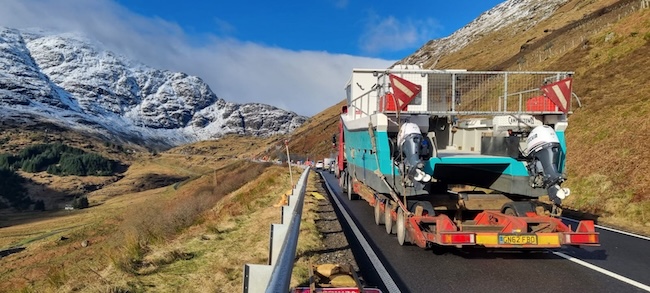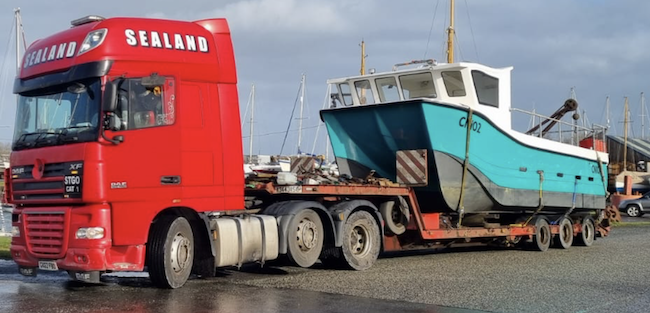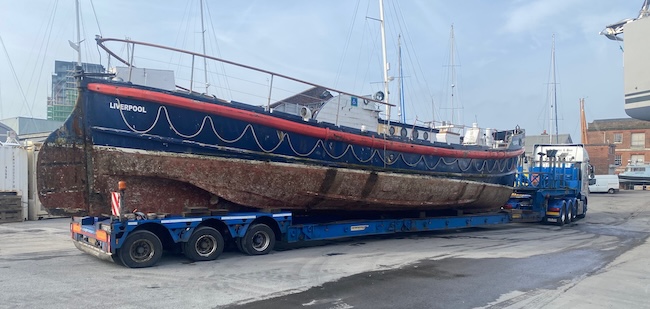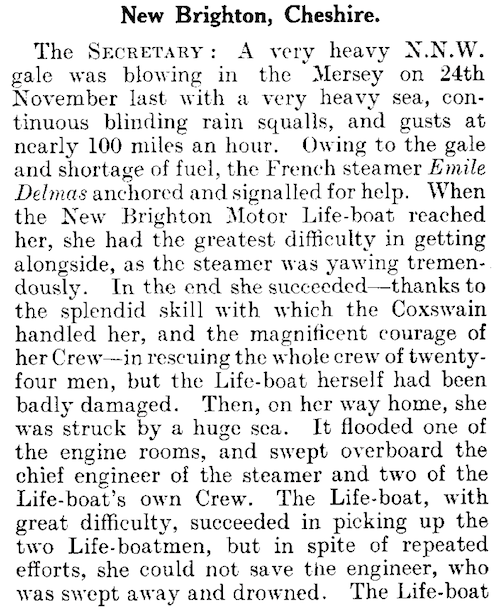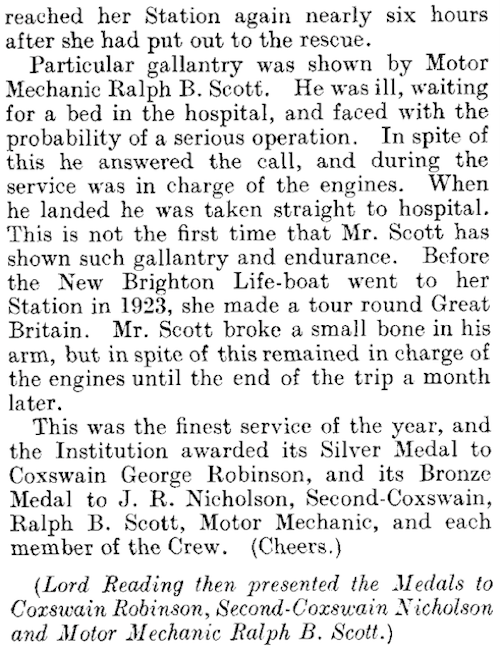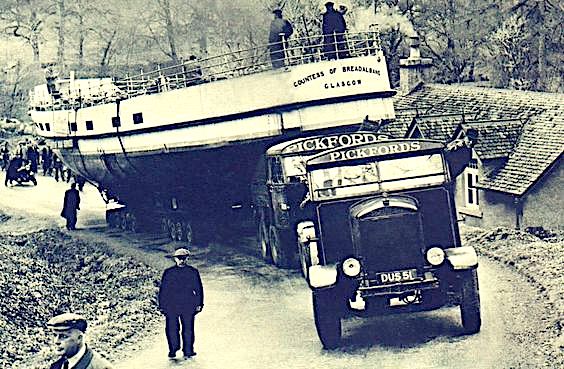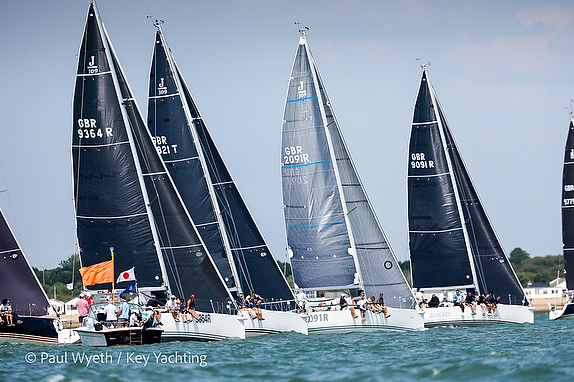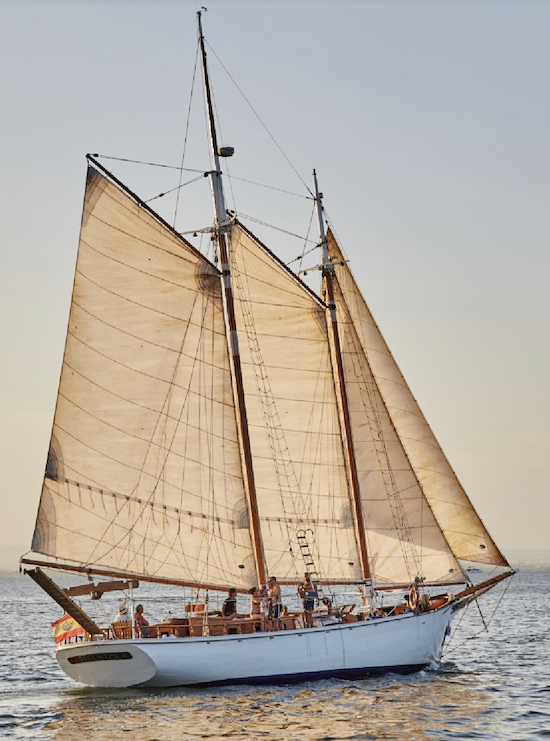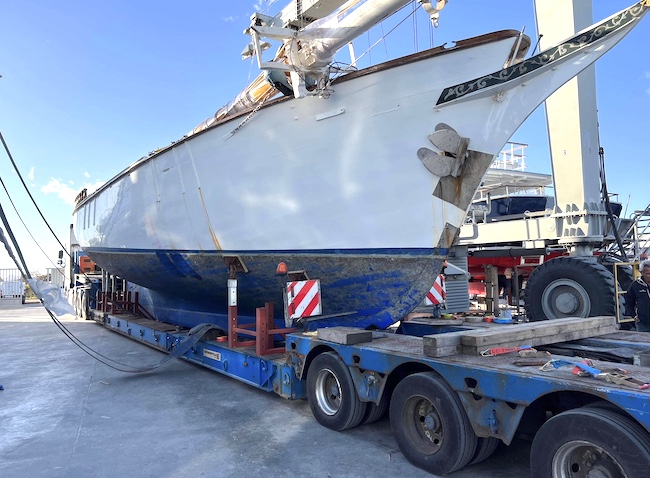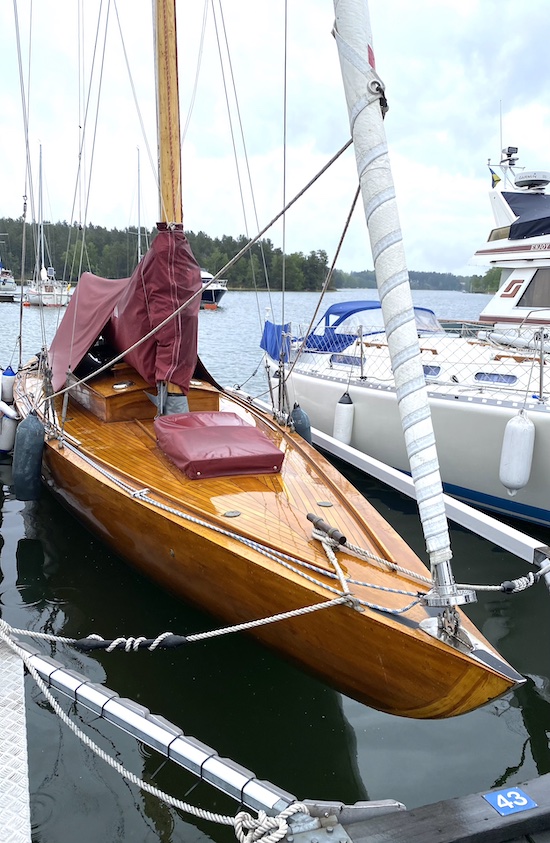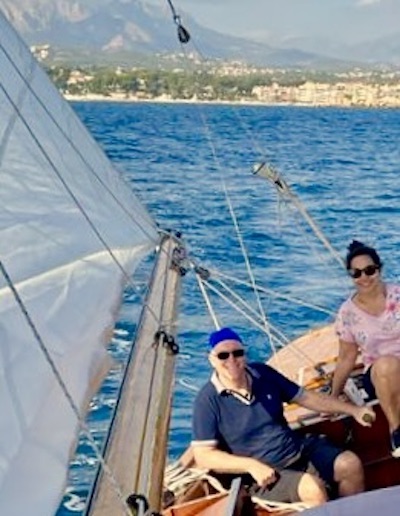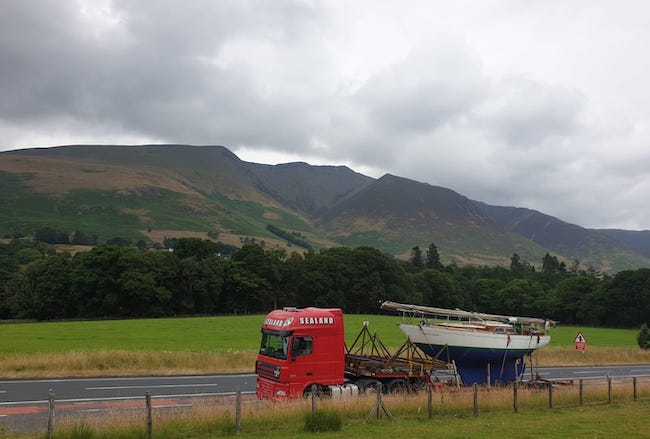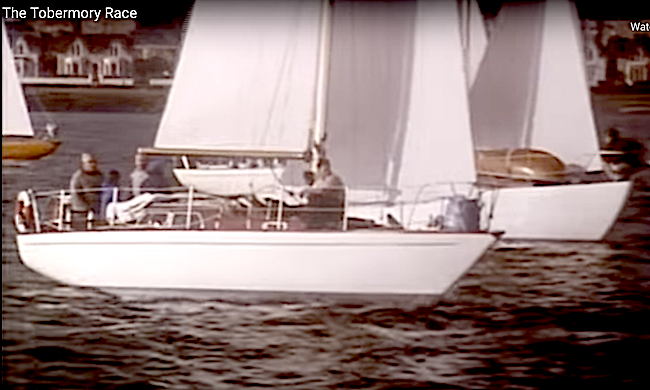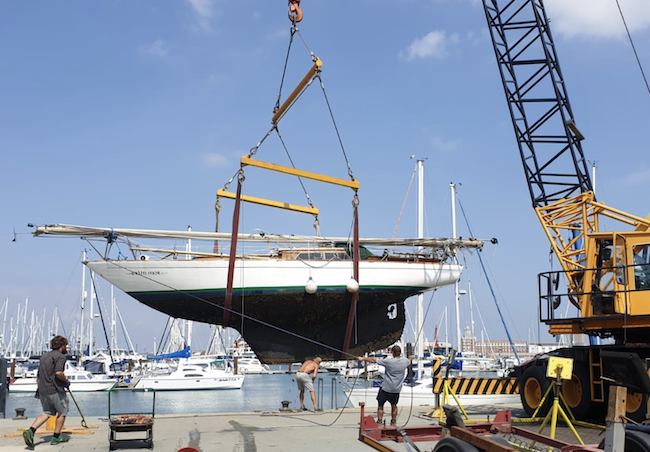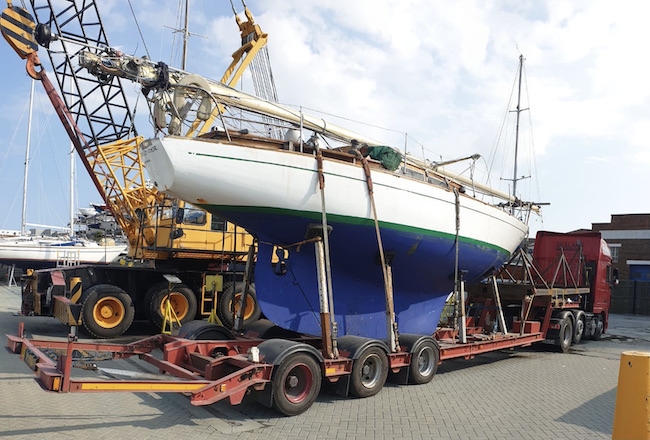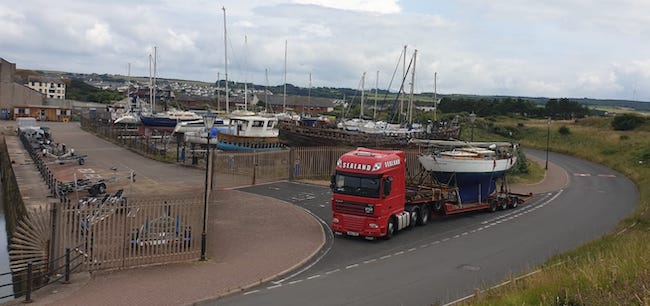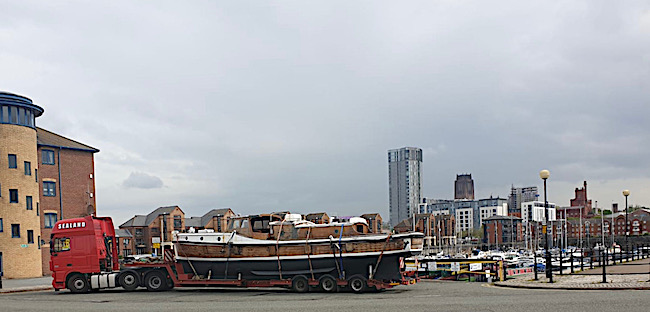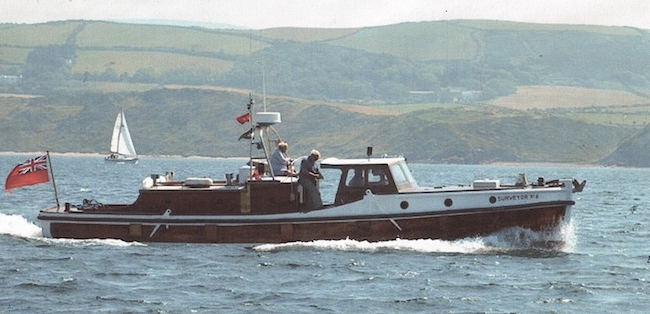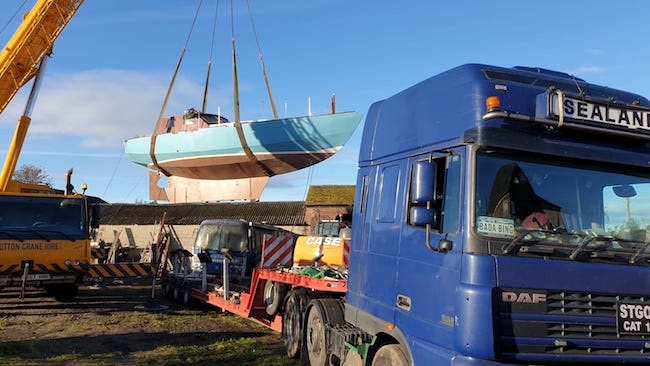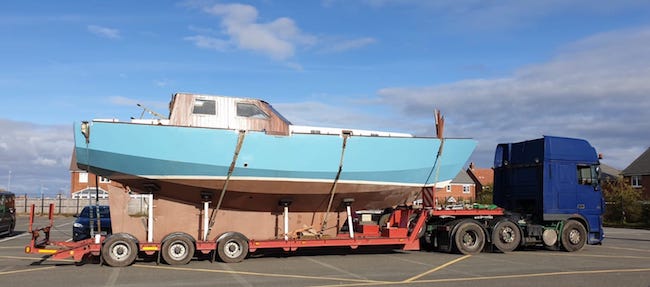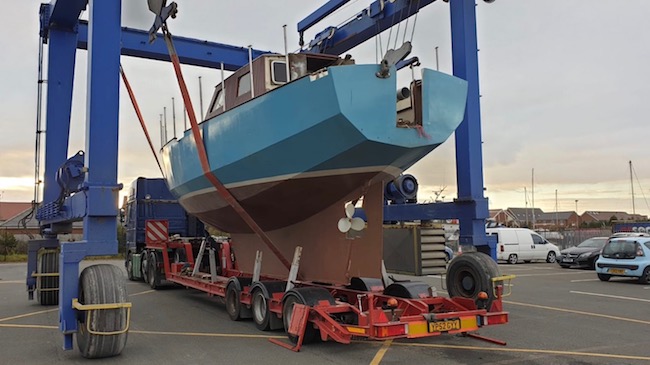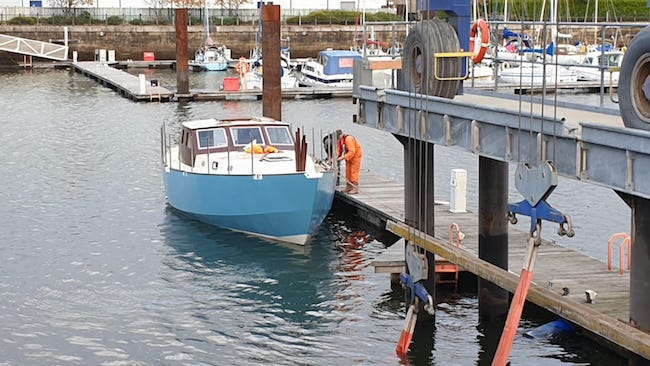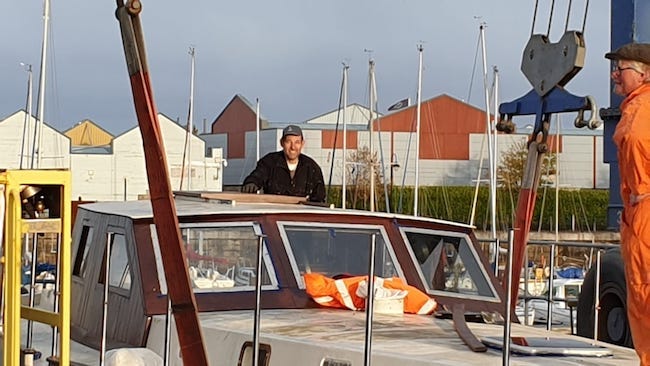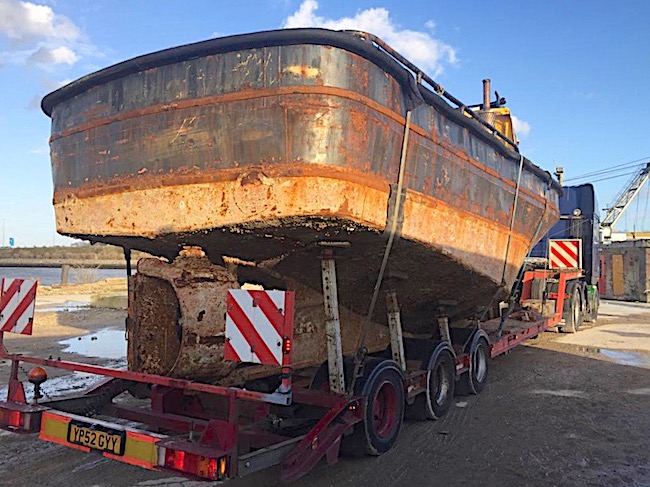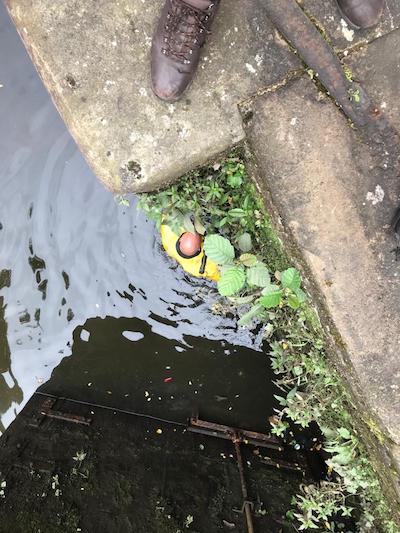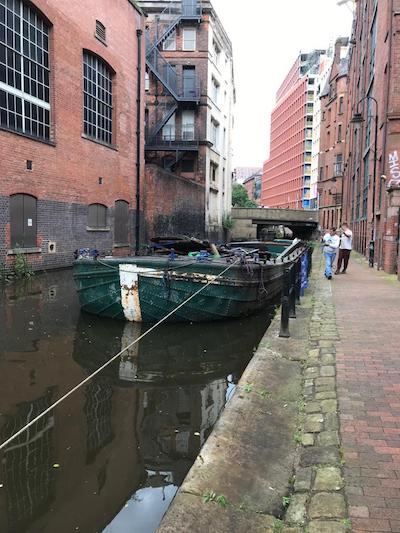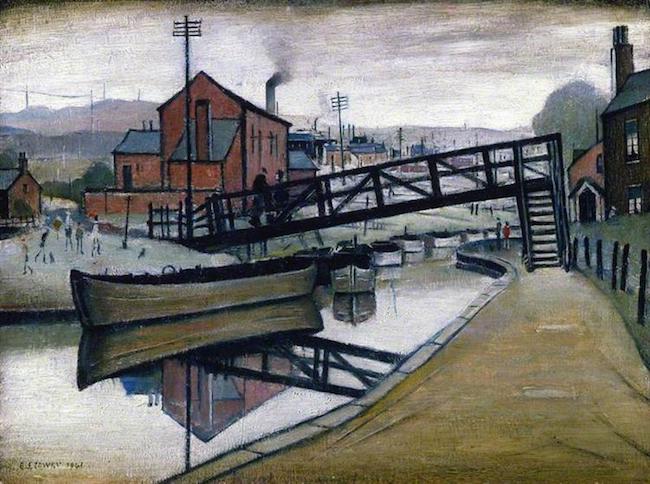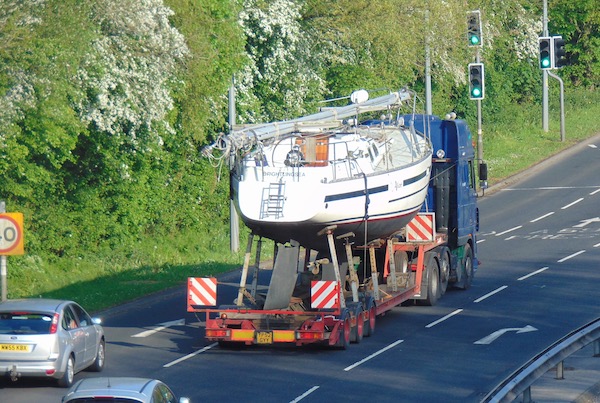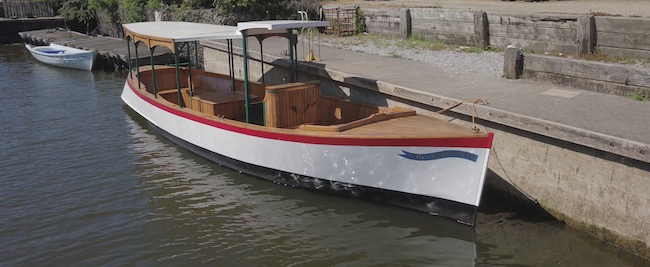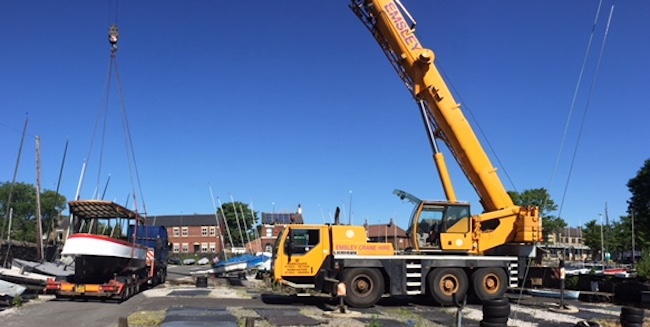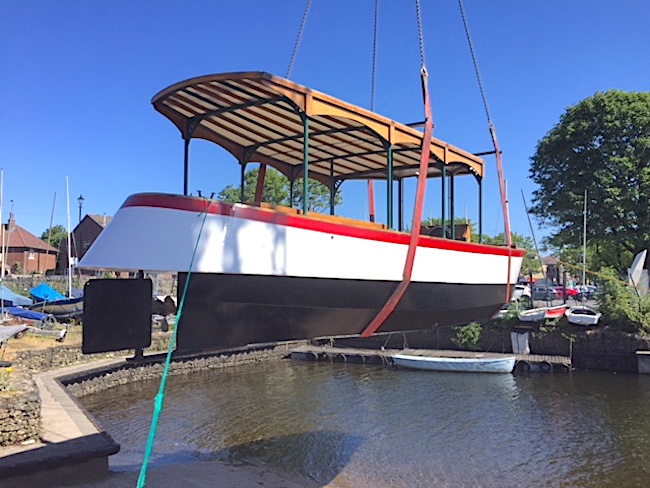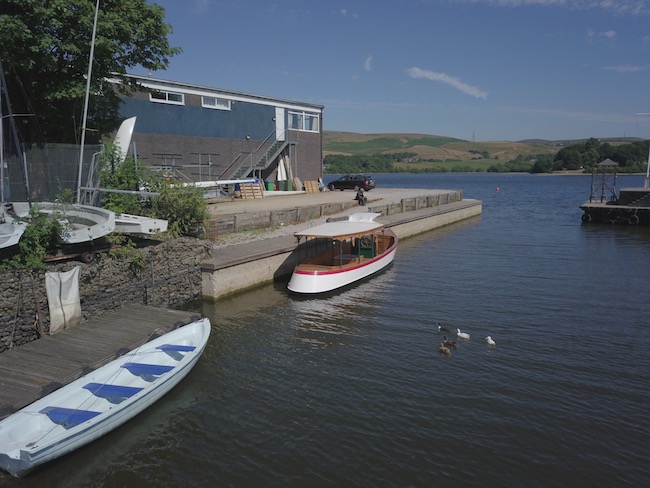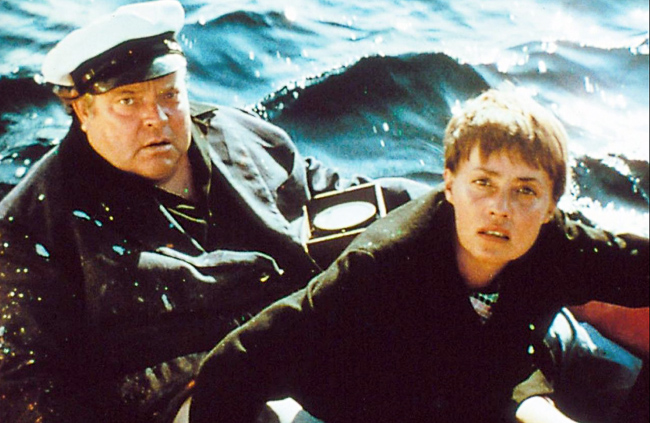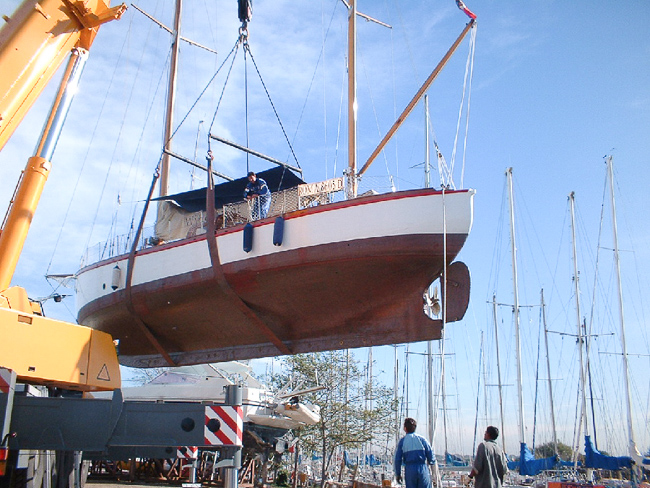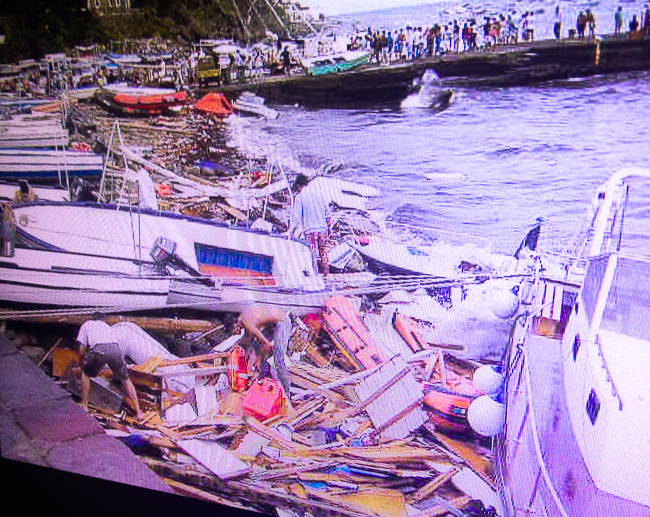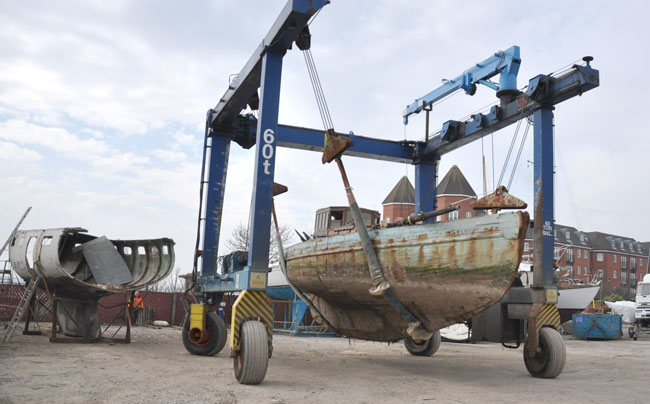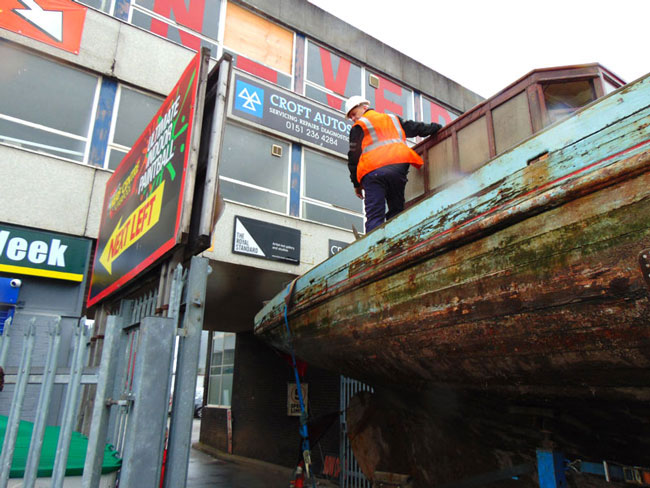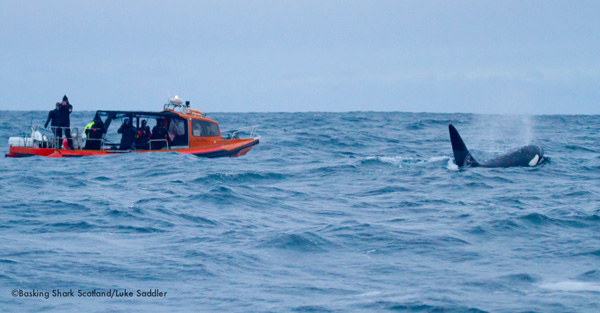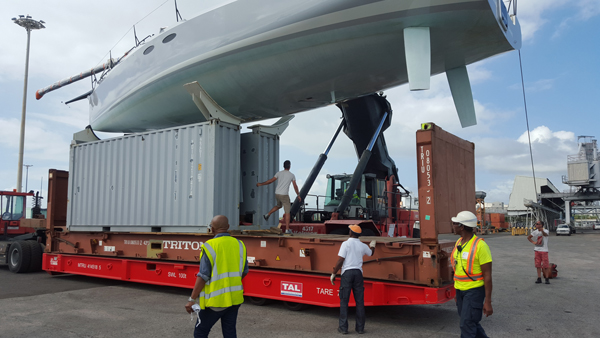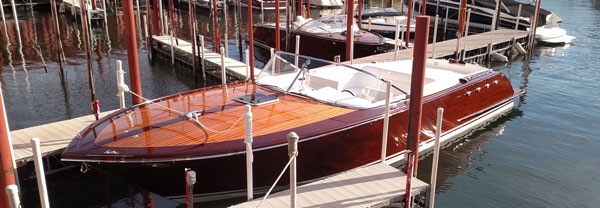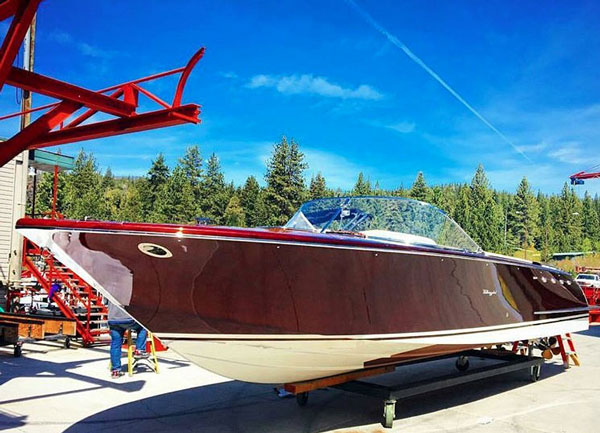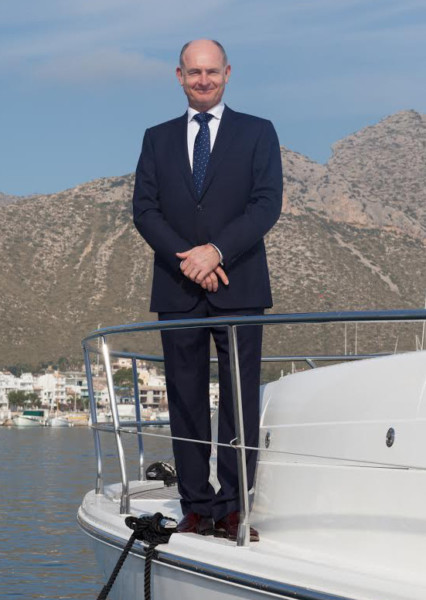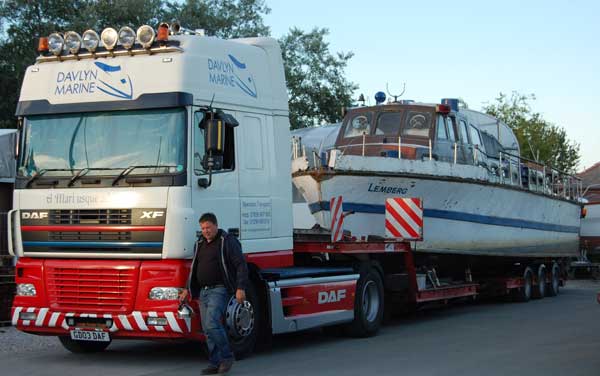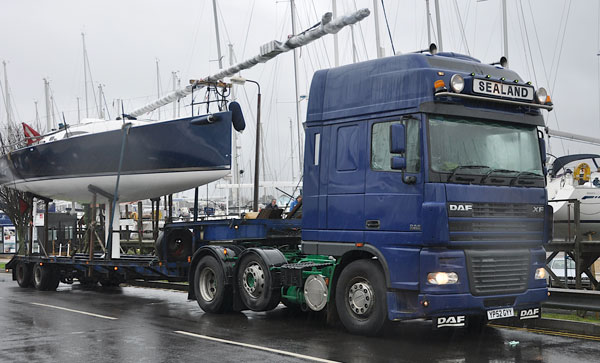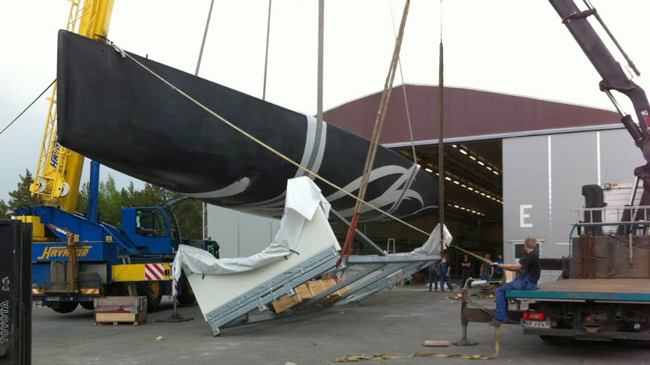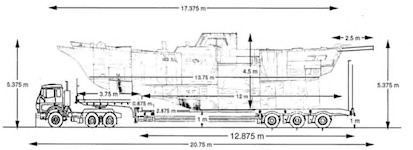 
|
|||||||
| Boat Transport | Transport Quotation | Boat Data | Forecasts | ||||
BEACHED WHERE MOUNTAINS MEET THE SEA 

The only known nobby built in Barrow-in-Furness was constructed during the hungry thirties in Richard Ingram's boatshed, a former mission hall at Ferry Beach on the Walney Channel. In Nick Miller's book The Lancashire Nobby he writes: We were fortunate to mee Mr A. George who had persuaded Mr Ingram to allow him to work as a tea boy in the summer of 1930 when Cachalot was building. He has clear memories of Mr Ingram walking around the boat when it was in frame, with a plane in hand sighting to check for fairness, and later he remembers the steaming of the cockpit coaming. Her planking [was] 1¾in larch and her framing was heavy at 2in by 4in doubled. Close study... reveals the unusual run of the garboard and next strake, which run down from the stern rebate to the keel so that the garboard is triangular. 
My father, Sidney Higgins, owned the Cachelot until he died in the mid seventies. He was a boat builder based at his West Kirby boatyard... The boat worked her way through the family; Bill Higgins was Sidney's father. After my dad died, the boat became his older brother George's property. She was then sold by my aunt, Uncle George's wife, when he died in the nineties. A unique and beautiful boat... long may Cachalot sail.David Higgins remembered in 2025, "I have the fondest memories of playing on my grandfather's boat Cachalot as a young boy and watching him sail in from a day of shrimping. The boat was moored beside their home Tidesway on the Dee at the end of Manners Lane in Heswall."
 1865 engraving of Barmouth Beach and Cader Idris, Newman & Co from the National Library of Wales
TERN SETBACK
The Douglas, also known on its tidal reaches as the River Astland, was running in flood on September 21 when two new bow warps parted. The ebb tide and the wild river swamped the recently restored 34-foot 8-tonne classic. Her graceful stern disappeared under a landing stage pontoon. With her owners, Gail and John Hodson, unable to return home from Portugal, a team from nearby Douglas Marine pumped her out and towed her rudder-less to their boatyard slipway trolley. Designed for beating the strong tides of Morecambe Bay by William Stoba and built in 1893 by John Gibson & Sons of Fleetwood, TERN was in the Ribble estuary on January 18, 1906, in a storm described by Nick Miller in The Lancashire Nobby [Amberley, 2009].
Isaac Dobson and his crew John William Harrison were working Little Nellie PN 36 in company with Tern PN 64 [crew Henry Melling and Robert Harrison], Why Not PN 25 [crew Skew Ball and Hugh Rimmer], and Wild Duck crewed this time by Nicholas Johnson and William Harrison. They were trawling near the 3 fathom line towards the Gut Channel Buoy. The weather worsened dramatically at about 12.30, about an hour and a half after the start of the flood. Little Nellie and Tern ran for home, whilst Wild Duck with her mainsail blown out was able to reach the Sand Pump Maynard in the Penfold Channel. Maynard towed her and several Lytham smacks back in to Lytham. Meanwhile the Tern sailed back to her mooring and immediately alerted the lifeboat's honorary secretary to the need to launch. Unfortunately, under the eyes of those watching from the pier and on St Anne's promenade, Little Nellie was driven on to Salthouse Bank, to disappear under the breakers. The body of 36-year-old Ike Dobson was recovered on the following Sunday, but 27-year-old Willam Harrison was never found.  The tidal Astland at peace, seen from TERN on her home mooring. JOHN HODSON
Launched after a major re-fit in 2024, TERN was moored at a dedicated landing stage in the pre-1924 location of James Mayor's Tarleton Boatyard. JOHN HODSON
Tern was swamped in the flood waters caused by the recent heavy prolonged rainfall. Despite the bilge pump set on automatic and more than enough warps (double bow and stern plus springs) of new rope, she sank and finished up with her stern wedged under the pontoon. Unfortunately, we were, and still are, in Portugal working on our project out here with no flights available and unable to return. Fortunately however, friends secured her and notified Douglas Marine who pumped her out and towed her down to Hesketh Bank. Meanwhile there is a suspicion that her mooring warps were cut as a neighbour had challenged some young teenage lads but I will need to investigate what happened upon our return. TERN once lay in mud for three years on the notorious Tiger's Tail sandbank off Fleetwood. She was raised by Stan Hurley, a member of the Nobby Owners' Association, who sold her for a 3-year restoration by Mike Griffiths who renamed her ARTHUR ALEXANDER after his father and won the 1988 Liverpool Nobby Race in a record time. When Mike died in 2014, the nobby was again rescued for a major restoration by John Hodson.

Gardiner registered her as fishing boat LR102 at Lancaster on October 30, 1896, just two weeks after Joshua Slocum helmed his gaff-rigged 11.2m oyster boat Spray into Sydney harbour, Australia, after rounding Cape Horn alone during the first solo voyage around the word. The Lancashire namesake fished Morecambe Bay, the Dee estuary and the Solway Firth for 77 years until the late Tom Middlebrook, Liverpool insurance broker and founder secretary of the Nobby Owners's Association bought her at Maryport in 1987 for a 3-year restoration. Tom Middlebrook owned SPRAY for 30 years and raced her in the Liverpool and Conwy nobby races.

 Town councillor Jason Slater pointed out that the renewed presence of a nobby on the Morecambe foreshore will once again match the crest of Morecambe and Heysham.
REST AND BE THANKFUL
The Twinseas Alaskan 8m catamaran was bound for Feolin Ferry on the island of Islay and due to be launched at Craobh Haven, beyond Lochgilphead.

Cattle drovers named the pass Rest and be Thankful long before Major William Caulfield and the men of the 24th Regiment, later the South Wales Borderers, constructed a military road through the pass after the 1745 Jacobite Rising. The present A83, higher than the narrow Military Road, was opened in wartime in 1941. In 1838, Lord Cockburn, returning from administering justice at Inverary wrote
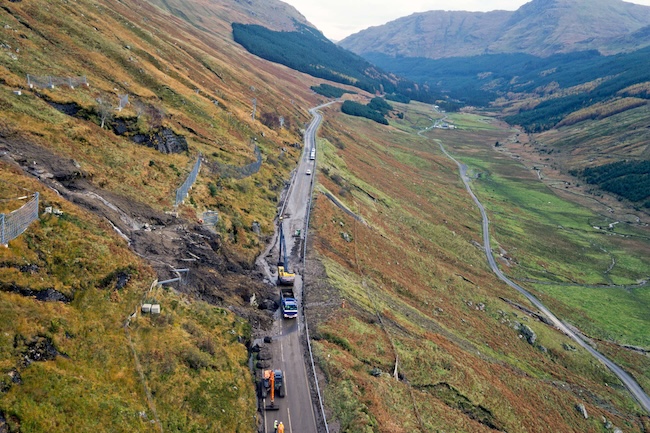 Traffic Scotland
Boat Transport News 2024
Built at the Samuel White yard in the Isle of Wight in 1923 as the world's largest lifeboat, she was too long and too heavy for the slipways of the Royal National Lifeboat Institution and stationed permanently afloat off New Brighton she was the closest lifeboat to the Mersey Bar with space aboard for 130 survivors.
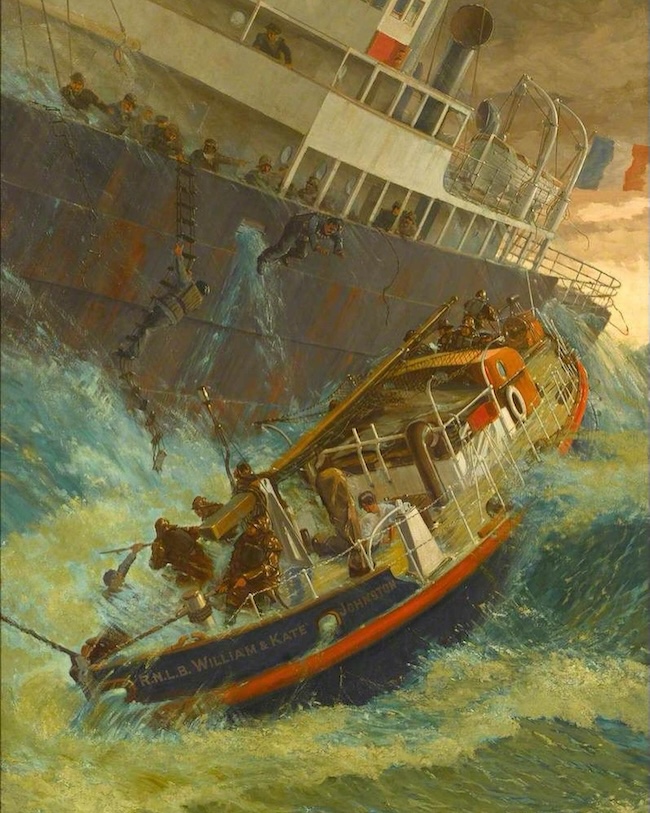
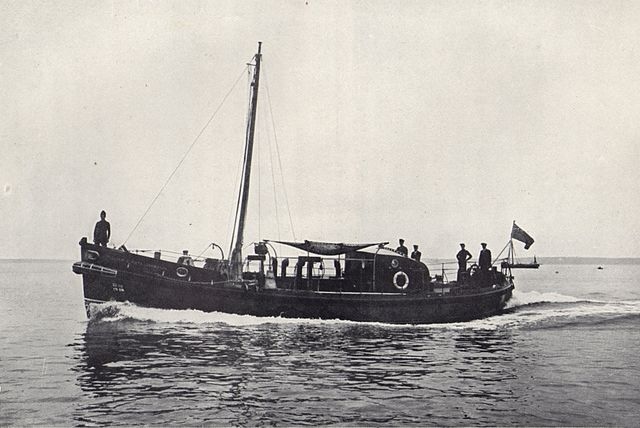
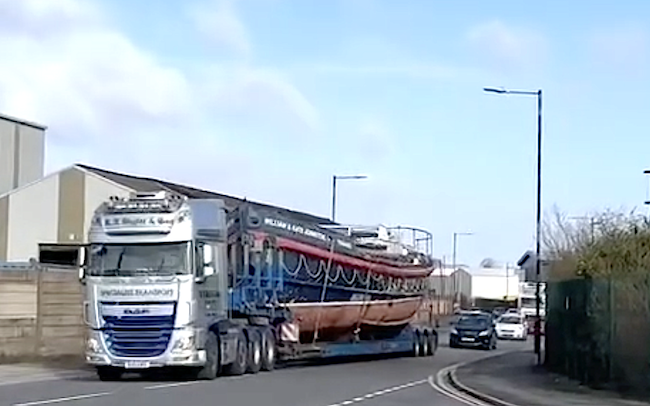
Bugler Transport and Sealand Boat Deliveries delivered the lifeboat to the MST shipyard at Riverbank Road in Bromborough for the William & Kate Preservation Society who recently renewed their appeal for funding to keep the project on track. Tristan Dickson, a society director and trainee helmsman on New Brighton's current 35-knot RNLI lifeboat, told the Wirral Globe: “The first part of this project always felt like the hardest to achieve, and the most critical in terms of timescale. “From here, we can take stock of what needs to be done and begin the longer process of restoration and repairs, and soon enough we will see her back on the Mersey, where she belongs.” William McDowell's 1928 painting An Epic of the Mersey courtesy of the Williamson Art Gallery, Birkenhead.
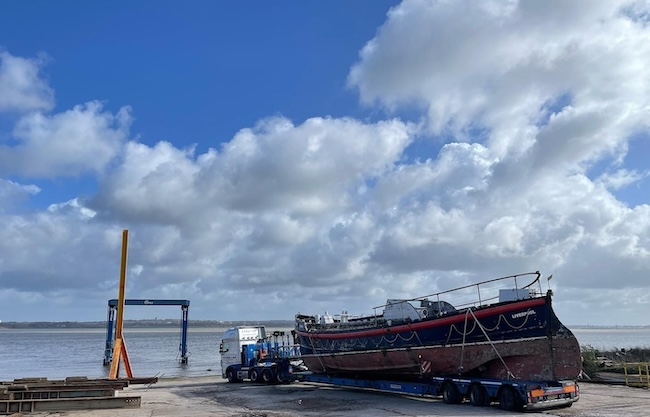 William & Kate Johnston reached the MST River Mersey slipway on March 22. [preservation society image]
Boat Transport News 2023
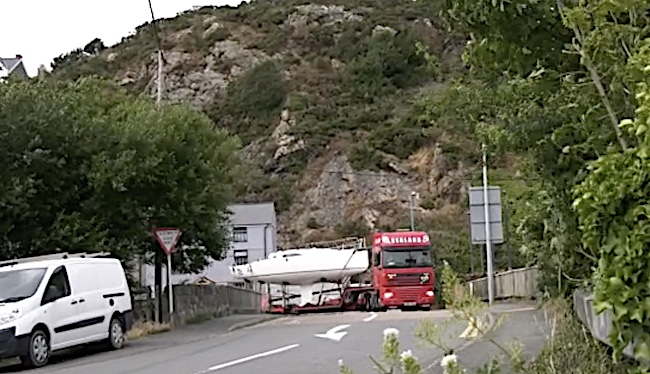
The J/99s raced against J/70s, J/109s, and J/111s, according to class rules, while IRC1 and IRC2 yachts were racing under IRC mixed fleet rules. John Treanor and his Irish crew, racing the new J/112e VALENTINA within days of her commissioning, took first place in the IRC 1 Division.
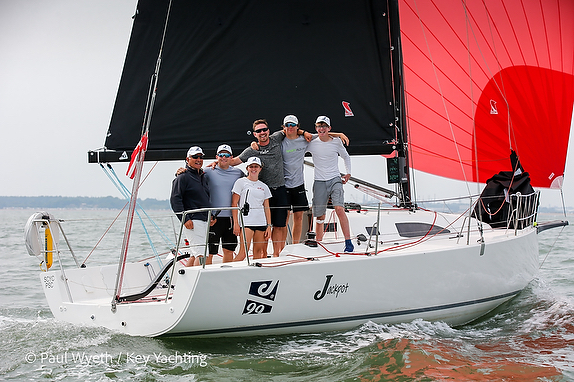 J/99 JACKPOT 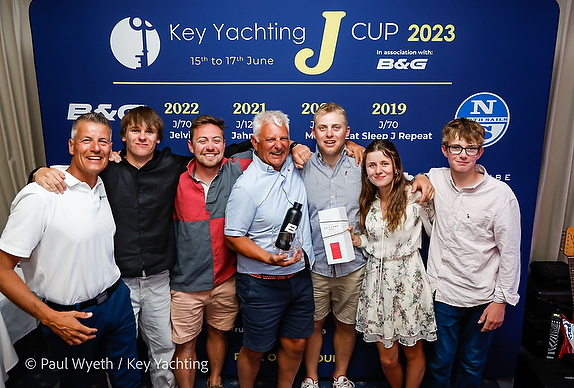
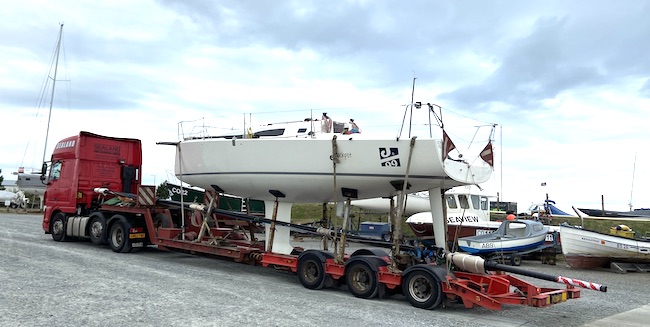
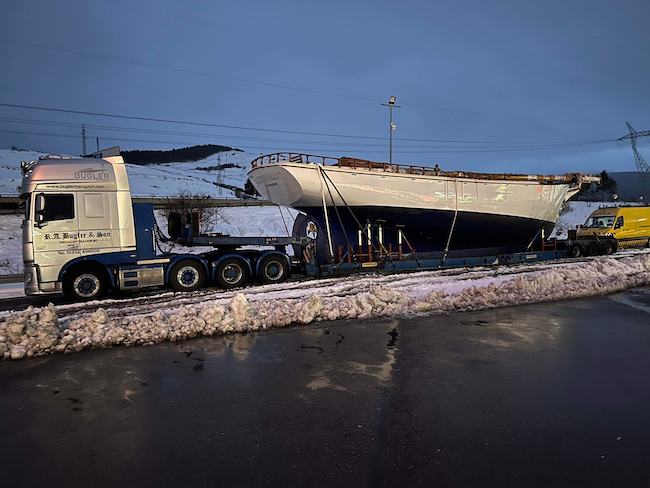
Forty Cayman and Jamaican shipwrights built FAIR WEATHER in mahogany and teak between 1947 and 1950 for a British journalist and wartime spy in a boatyard backed by Ian Fleming, the creator of James Bond. Sir Anthony Jenkinson [1912 - 1989], a direct descendant of the explorer Anthony Jenkinson [1529 - 1610], Queen Elizabeth I's ambassador to the Muscovy court of Czar Ivan the Terrible, became the 13th Baronet Jenkinson of Walcot and Hawkesbury at the age of two, when his father was killed in one of the first battles of the First World War. The other partners in the 1947 Cayman Boats project were Leicester Hemingway, younger brother of the novelist Ernest Hemingway, and the shipbuilder Arnold ‘Cappy’ Foster, whose men laid down the first keels on Cayman Brac until a shortage of craftsmen forced them to tow the early hulls for completion at the former Royal Navy shipyard in Port Royal, Jamaica, arranged probably through the influence of recently demobbed Cdr Ian Fleming of the Naval Intelligence Division in London. When the shipwrights from Cayman Brac were working in the naval yard at Port Royal, Sir Anthony re-developed the 17th century buccaneering base of the Welsh-born privateer and governor-general, Henry Morgan, a slaveowner who had himself been kidnapped and enslaved as a boy. In the first of the Bond movies, Dr No, filmed in Jamaica in January 1962 and based on Ian Fleming's sixth Bond thriller, Sean Connery encounters Ursula Andress [Quarrel] at Sir Anthony's raffish Morgan's Harbour Hotel, now the Grand Port Royal Hotel, on the waterfront at Port Royal. FAIR WEATHER, designed by Murray G. Peterson, of South Bristol, Maine, and the Danish-American designer K. Aage Nielsen, was launched in 1950 and Sir Anthony lived aboard her with his family for several years. Ian Fleming, Ernest and ‘Les’ Hemingway and the hell-raising film actor Errol Flynn were often seen aboard her. Sir Anthony had been at Eton College with Ian Fleming and his brother Peter Fleming, explorer and author, and at Balliol College, Oxford, with the future politicians Jo Grimond and Anthony Greenwood, but as war loomed in 1938 he turned up as a reporter during the Japanese invasion of China.
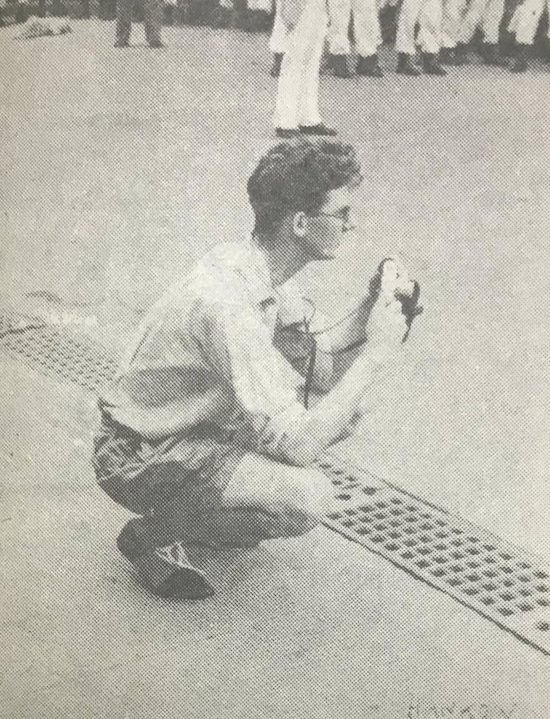
Early in 1939, Sir Anthony persuaded Arthur Christiansen, editor of the Daily Express, to back him on a pre-war espionage mission in the spirit of the spy novel The Riddle of the Sands. Jenkinson and Lieutenant James Maudslay sailed the 38-foot sloop LA MUCHACHA on a 5000-mile Mediterranean and Black Sea cruise to spy on activity by the Italian and German navies. On their return, Cdr Ian Fleming, chief of staff to Admiral Godfrey at the Naval Intelligence Division asked Jenkinson to mount a similar spying operation in the Caribbean Sea. Sir Anthony bought the 45ft schooner BLUE STREAM and sailed for Key West in Florida in 1940. Leicester Hemingway crewed with Jenkinson and according to a Cayman Compass interview with Sir Anthony's son, Sir John Jenkinson, ‘They investigated German preparations for submarine warfare in the Caribbean area, mostly inland islands off the coast of Central America, gathering information which was to prove vital as German submarines set about attacking British shipping in the area.’ The secret BLUE STREAM voyages inspired Ernest Hemingway's 1951 novel Islands in the Stream which was not published until 1970, nine years after Hemingway's death.
Sir Anthony founded and edited a wartime news service in New York and London known as Allied Labour News, specialising in publishing reports from allied secret agents and resistance saboteurs, often socialists and communists, operating in German-occupied Europe. A 1985 report in the Cayman Compass suggests that Sir Anthony's confidential files on his secret agents suffered the same ruthless post-war destruction by the intelligence services as the files of the Special Operations Executive that were destroyed in a mysterious fire at Baker Street in 1946. The Cayman Compass stated After the war ended, he returned to the UK from New York to find his office ransacked and files on correspondents missing. That was enough. Sir Anthony took the hint, he had performed a very useful wartime service, the war was over, and he decided to return to his first love, the sea.Skippered by her regular Grand Cayman sailing master, Czar Hurlston, and fitted with a refrigerated hold, FAIR WEATHER spent 1951 working as a reefer ship, servng 25 Jamaican fishermen stationed out on the lonely sandbanks of the Pedro Cays, 100 miles from Kingston. Using a fleet of 10 canoes, the men fished the Pedro Bank for three days and nights until the schooner picked them up. On February 20, 1951, after her first sortie, FAIR WEATHER landed 4.5 tonnes of fish, the largest catch in Jamaican waters in living memory. In 1952 Paramount Pictures chartered the schooner in Jamaica for filming Road to Bali in which Bob Hope and Bing Crosby, as ‘two unemployed show-biz pals accept treasure-diving work in Bali for a local princess and they find treasure, love and trouble.’
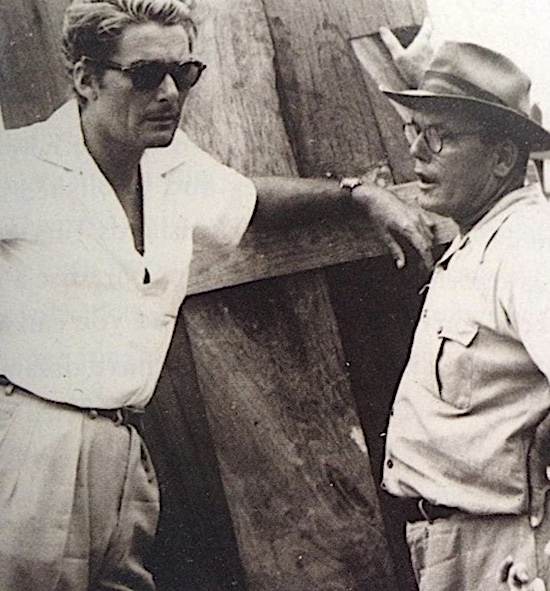
Ira Walton, a seafarer from Cayman Brac, faced with a bad weather forecast, had berthed FAIR WEATHER, 72ft overall, on a dock berth reserved for Flynn's notorious 118ft schooner ZACA. Ira told the Cayman Islands National Archive in 1991:
We were down below. We had to sleep by lantern because we didn't have no electricity. During the night, I heard this thing bucking alongside and I heard a voice calling and accusing me, accusing us, of being drunk, gambling and smoking ganja. I could hear it was Flynn's voice.It took Sir Anthony to make peace between Flynn and Ira Walton. Flynn eventually saluted FAIR WEATHER by circling the schooner in a light aircraft as she made her way under sail across San Antonio Bay. In the first winter after the 1953 coronation of Queen Elizabeth II, the new queen and the Duke of Edinburgh arrived in Jamaica to start a Commonwealth tour aboard a Shaw Savill liner chartered as a royal yacht. Sir Anthony hosted the world's press aboard FAIR WEATHER to escort SS Gothic and the cruiser HMS Sheffield offshore, outward bound for the Panama Canal, Fiji, Tonga, New Zealand and Australia. FAIR WEATHER was sold in 1958 to a wartime destroyer captain, Cdr Angus Alexander Mackenzie, three times mentioned in dispatches in the years between Dunkirk and D-Day. Mackenzie may have sailed the schooner to Hong Kong and Japan, where his Hong Kong & Eastern Shipping Company was based, because a year later, he sold her in San Francisco to Suttie Adams, a notable Californian yachtswoman and her husband Bill. Sailing with her children, but for many months without her husband, Suttie spent four years navigating the Cayman schooner to 103 ports on the 35,566 mile circumnavigation that she recorded in her book The Cruise of the Fairweather. The project to bring FAIR WEATHER back to the Cayman islands is headed by Paul Deegan, who discovered the last of Sir Anthony's Cayman schooners afloat in Mallorca under the name BELLA LOLA and in the careful ownership of a former Spanish naval officer, Luis Perez-Solero Puig, and his wife Lola.
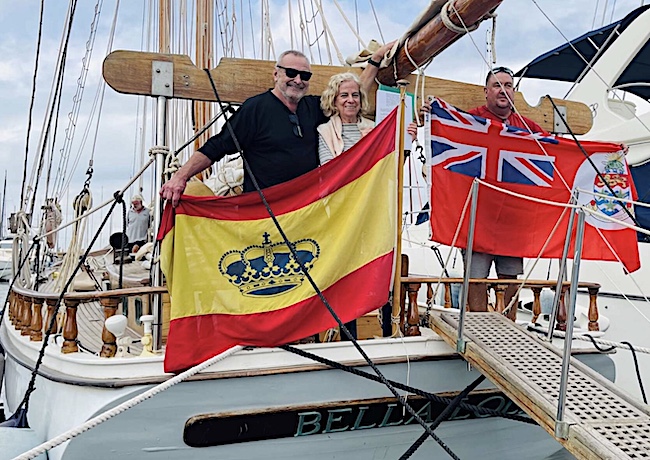
Paul Deegan says The refit by Tommi Nielsen should make it possible for her to return to Cayman in 2024. Once here, the classic schooner will be part of the not-for-profit Fair Weather Foundation. She will be used as a historical and cultural vessel to educate the children in all our schools about how our forefathers built the boats that enabled life to flourish on Cayman.
Boat Transport News 2022
SKUMwhich means ‘foam’ in both Swedish and Norwegian, was not her name when she was launched in 1903 at Christian Jensen‘s boatyard at Vollen on the Oslo Fjord. Designed and built by Jensen as a 9 SL gaff-rigged zee und touren kreuzer to race in a new tri-national competition known as the Kattegatt Trophy, she was owned by Alfred Larsen, a wealthy Norwegian liquor importer who named her MAGDA III and entered her for Norway to race against the Swedish KATTEGATT and the Danish VERANA. MAGDA III won a preliminary race but dragged her anchor in an unexpected storm on the night before the main event at Narverød and was too badly damaged to compete. VERANA won both races for Denmark. MAGDA III changed hands after repairs and re-appeared in 1905 as NAMI, in 1908 as ACT(EA)ON, in 1910 as DAGMAR before vanishing from the Norwegian register in 1915 after being sold in Finland during the First World War when that country was still a Russian grand duchy under the rule of Tsar Nicholas II. The classy racer survived the First World War and the disintegration of the Russian empire. It is thought that she may have donated a lead keel for bullets during Finland's fight for independence after the 1917 Russian Revolution. Swedish customs arrested her on July 17, 1931, outward bound near one of the Välets lighthouses in the Stockholm Archipelago, just after smuggling 200 10-liter canisters of 96 per cent Estonian tulivesi firewater vodka into Sweden. She was just one of hundreds of fast boats used in the gigantic 1920s smuggling rackets out of Danzig and Estonia, across the Vodka Sea to the booze-starved Nordic countries of Norway, Sweden and Finland. Sweden had almost voted for absolute prohibition of alcoholic drinks in a referendum in 1922. A bottle of vodka costing two marks in the Free City of Danzig fetched forty marks wholesale on the black market in Helsinki.
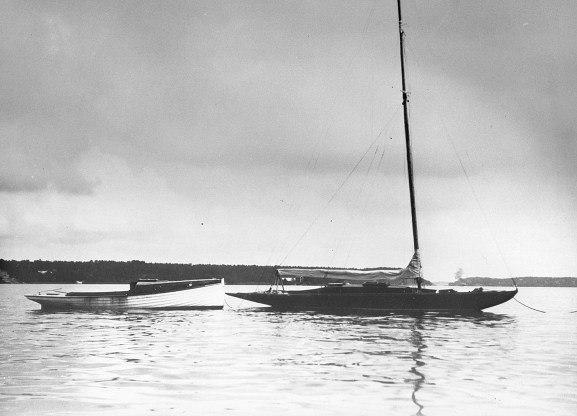
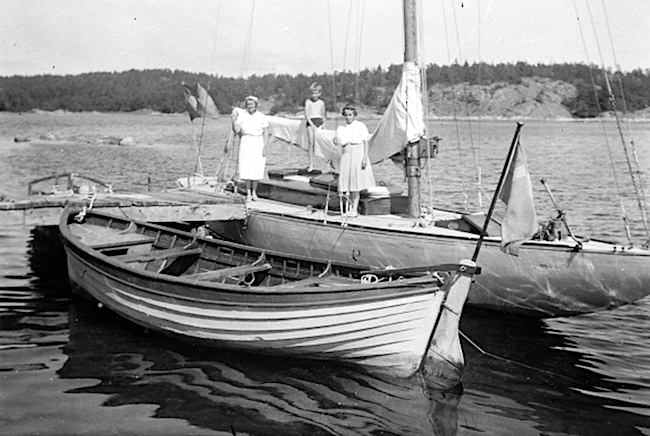
The classic yacht enthusiasts Christer and Cecilia Nordwall found her under a torn tarpaulin in a Swedish forest clearing in 1998. In the January 2010 edition of Classic Boat magazine, Olle Appelberg reported that the Nordwalls had used nearly four cubic metres of new planking in their long restoration. Christer Nordwall said after the relaunch in 2009, "It was a great feeling to see her in the water. We spent every weekend on the boat all summer. I haven't regretted the hard work for one second."
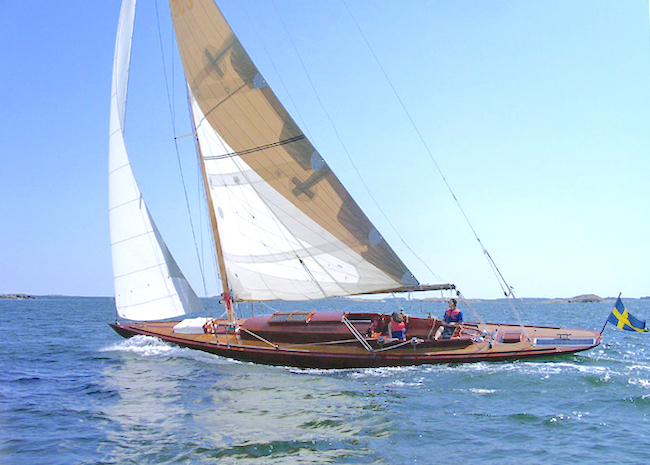 Christer and Cecilia Nordwall in action with their restored 8 mR
As lorry driver Koen Lemmens neared the multilingual Costa Blanca, transporters Sealand Boat Deliveries in England arranged Marco Glauner's tactful name change from the tricky Nordic, with its unpleasant meaning in English, to the Spanish VIEJITA, literally old lady but often used with affection, in the way Albert Chevalier sang about My Old Dutch in the London music halls after 1892.
We've been together now for forty years, 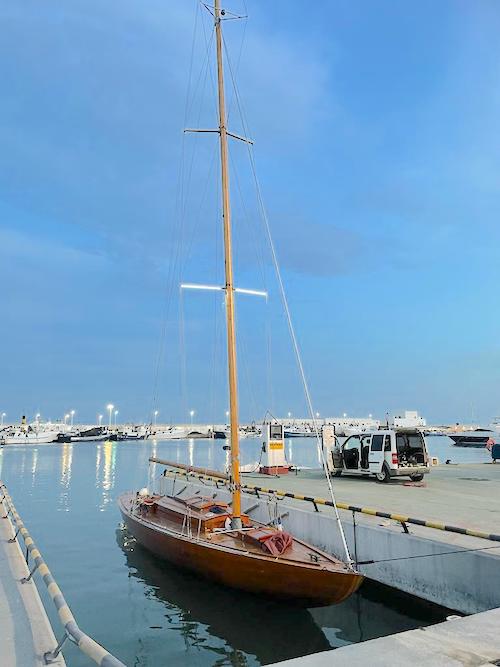
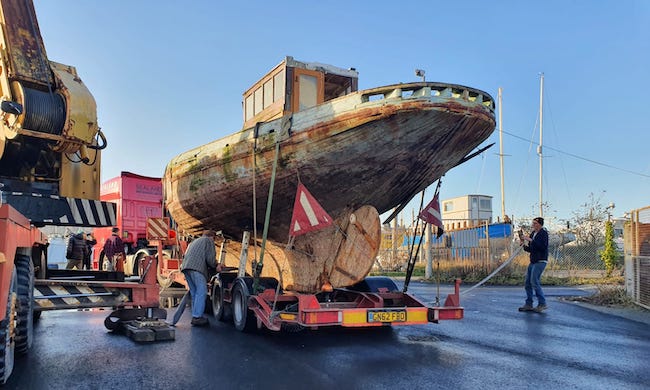
Saved from demolition at Riverbank Road, Bromborough, in a timely 2017 intervention by the late Tom Middlebrook, a Merseyside insurance broker, MYSTERY II demanded a second rescue before dawn in Liverpool under the auspices of the Nobby Owners' Association campaigning for the preservation of "Lancashire nobbies, Morecambe Bay prawners and kindred gaff-rigged boats". The job required two road trailers from Sealand Boat Deliveries and a 50T mobile crane and lifting team from Roadcraft in Bootle, to hoist the 12.6m x 3.65m 11500kg nobby out of a technical college yard before rolling a few inches under the first floor of an office block in Vauxhall Road, Liverpool. Built by James Armour at Fleetwood in 1911 for Frank Hughes of Egremont, Wallasey, the gaff-rigged 41ft Mystery II won the Magazines Sailing Club Regatta in her very first summer. Seven decades later, after two world wars and a hard life fishing from Conwy in North Wales, she was still fast enough to come second in the 1990 Liverpool Nobby race, using a suit of borrowed sails. Moored for years as the mysterious LL59 in the Mersey tideway near the Tranmere Oil Terminal, she was well-known to thousands of seafarers. Norval ‘Spike’ Brown owned her for fifty years.
Adrian Farey from the Elwy Working Woods Co-operative at Moelfre, near Abergele, has taken on the project after an initial assessment by Scott Metcalfe of Waterfront Marine.
 The darkest hour is just before the dawn
Boat Transport News 2021
Thanks to the Cold War alliance between Fidel Castro and the German Democratic Republic, her mahogany planks were probably best Cuban, rather than Honduran, the finest dark Swietenia mahagoni on steam-bent frames under decks laid in solid teak at VEB Yachtwerft Berlin in Köpenick, a yard founded in 1890. Despite trading barriers far worse than Brexit 2021, the adventurous Glasgow yacht broker, R.M. "Ronnie" Scott, had been importing East German versions of the Nordic Folkboat to customers at his Euroyachts city centre showroom since 1965. In the German Democratic Republic, he eventually befriended the Stasi secret policeman tasked with tailing him around the Leipzig trade fair and into state-owned boatyards with long histories of pre-war craftsmanship going back to Imperial Germany. Ronnie's foreign expeditions eventually led to a forty-year trading partnership between Euroyachts and the French company Jeanneau. He liked to display his discoveries in action on the Clyde during Glasgow Fair Weekend, the ancient late July holiday that has been dated back to the year 1190. For nearly a hundred years yachtsmen, rich and poor of all nations, have gathered off Rothesay at Glasgow Fair Weekend for the event they call the Tobermory Race, sailing in stages from the Clyde to Ardrishaig, through the Crinan Canal and on through the fierce tide race of the Dhorus Mhor and past the notorious whirlpool in the Gulf of Corryvreckan to Tobermory Bay on the Isle of Mull. The Glasgow Herald announced that 1968 would be a big yachting year on the Clyde with a hundred yachts joining the Tobermory Race to be televised as BBC Scotland's first-ever colour TV outside broadcast. The young Icelandic-born TV presenter Magnus Magnusson and a BBC camera crew would be aboard Ian Nicholson's 8-metre yacht St Mary with another cameraman high above the racing fleet, filming from a helicopter. The buccaneering Ronnie Scott was busy popularising a new international 7-metre class of cruiser/racer, cheaper than the fifty-foot 8-metres on the Clyde. Scott's salesmanship was legendary but the graceful 8-metres were never outnumbered and many are still around in 2021. Ronnie told the Herald that two German 7-metres ERLIN MOR and SHONA III had already been delivered from the DDR to his unusual city centre boatyard. A third yacht PELLINGAR III was due to be shipped from Berlin to Glasgow in March and two Scottish-built 7-metres, ZELEDA, building at McGruer's yard at Clynder on the Gareloch and NORELLA building at Sandbank, would mean that five 7-metres would be contesting the Tobermory Race. Despite Cold War politics ERLIN MOR would be campaigned in the Tobermory Race by her East German designer, Werner Siegel of VEB Yachtwerft Berlin.
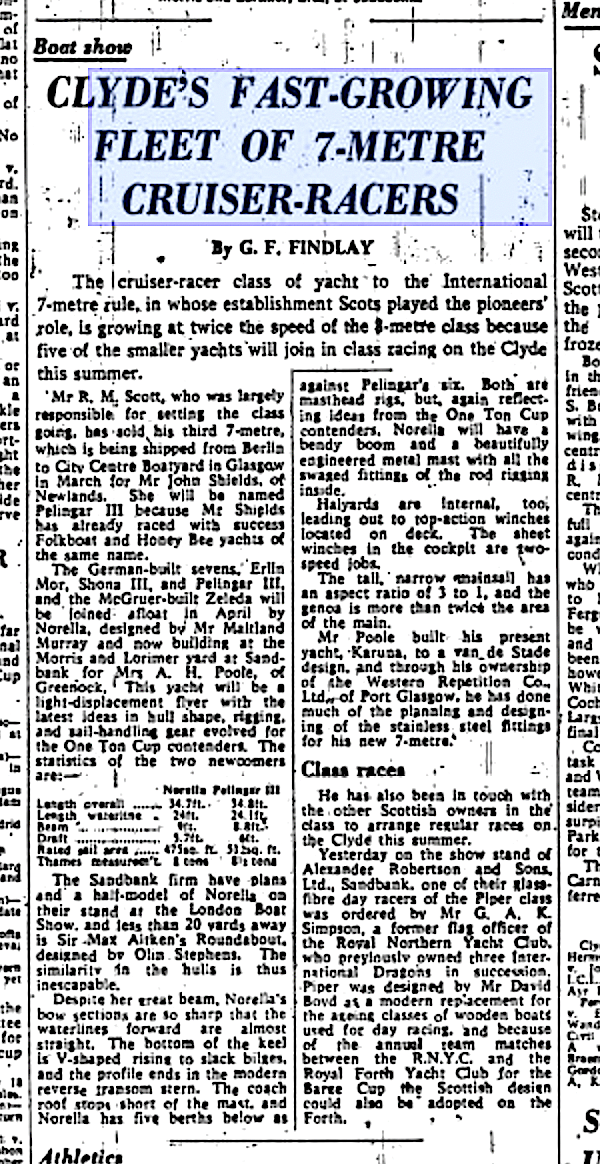
Ian Nicholson's fancied 8-metre ST MARY, carrying much of the BBC equipment, never made up time lost after grounding in the Kyles and again off Crinan. The winner of the 1968 race was another 8-metre, Kenny Gall's Christina of Cascais. The mahogany German 7-metres were losing the Zeitgeist. Glass-reinforced plastic yachts were appearing in Western Europe and the USA. But to the credit of both Werner Siegel and Ronnie Scott, many wooden yachts from VEB Yachtwerft have had very long lives. ERLIN MOR was seen club racing on Strangford Lough in Northern Ireland in the twenty-first century, but suddenly turned up in June 2021 on a deep water mooring off Whale Island in Portsmouth Harbour, offered for sale by the ominously named Boatbreakers firm in Gosport. "Boat demolition & disposal for any yacht, motorboat or ship, any size, any condition, anywhere" 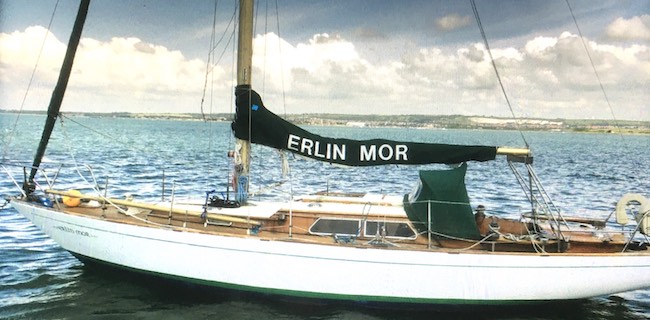
"I knew that my friend Julian Armitage in Cumbria was looking for a larger yacht. I told him about Erlin Mor and urged him in the strongest possible terms that she had to be rescued and refitted, not stripped and scrapped. Julian trusts me on all matters marine. He got into contact with Boatbreakers and made the purchase. Erlin Mor will get the attention she deserves and will once again sail across the Irish Sea. I told Julian that Erlin Mor was, and is, the most beautiful boat he will ever own." Julian Armitage made a deal with Luke Edney at www.boatbreakers.com for the 34ft 9in sloop to be towed from Whale Island to Gosport Boatyard for a tightly-timed 367-mile road delivery to safety on the hard at Maryport Marina. Andrew Rosthorn at Sealand Boat Deliveries said, "I liked the idea of rescuing one of Ronnie Scott's German 7-metres from demolition in 2021. We worked for Euroyachts in the 1970s when Ronnie was starting to import from Italy and France. He was a great deal-maker and we were often too expensive for him. But in September 1977 Ronnie ordered an urgent delivery of a 34ft Grand Soleil yacht from the Cantiere del Pardo in Bologna. We had no time to apply for Italian wide load permits, so we sent a very diplomatic driver with some cash to smooth things with the Italian police. That was the way it was in those days. "Unfortunately a rival Italian haulier outwitted our efforts at bribery. Our man was turned away and Ronnie was incandescent. Despite a successful second attempt and a faultless drive though the Alps by my partner Graham Hasleden, we were three weeks late in Glasgow."
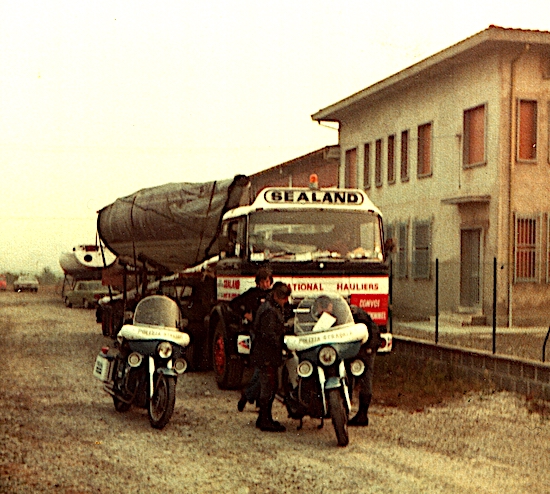
Bologna, October 1977
Gosport Boatyard, July 27, 2021
Rescued in Maryport
THE LEAVING OF LIVERPOOL
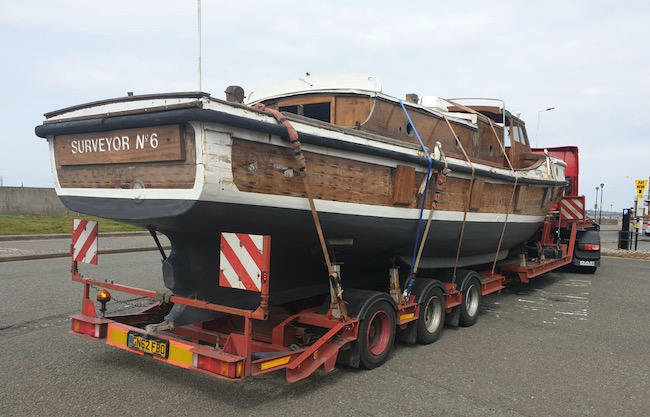
The MDHB master mariners who ordered the 41ft [12.5m] 12-tonne launch in 1962 for duty inside the docks and out on the exposed Mersey Bar were demanding clients. A superb Gardner 6LX oil engine and gearbox were matched with Kitchen patent clam-shell rudder gear to give reversed directional thrust like the clam-shell thrust reversing systems on jet airliners. The inventor of the steering system, John G. A. Kitchen of Storrs, Windermere, enabled a single engine to be run in gear at a constant, economical speed even when the vessel needed to be stationary. The vessel could turn in her own length. Under under the recent ownership of the Farrell family, SURVEYOR became well-known around the Irish Sea and much admired at the traditional boat weekends in Peel, Isle of Man.

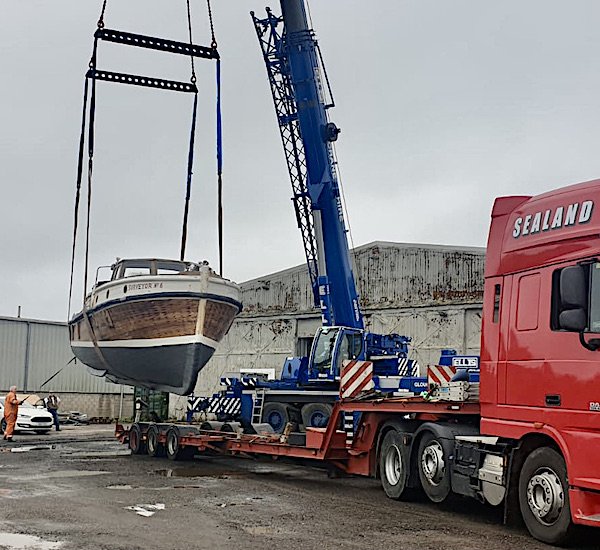
But my darling when I think of thee.
Boat Transport News 2020
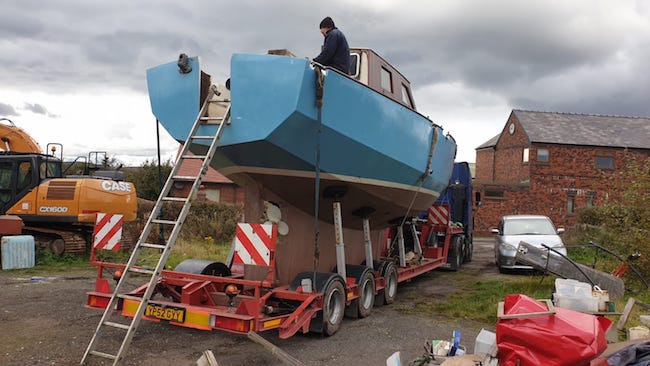
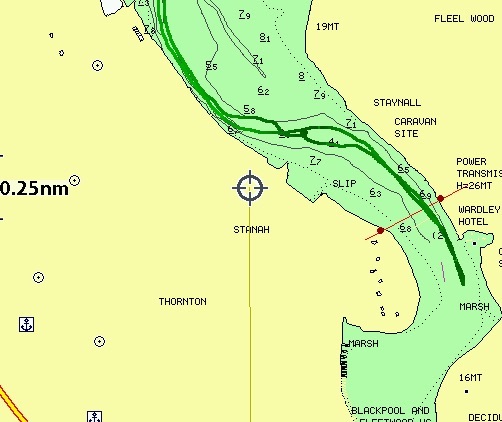

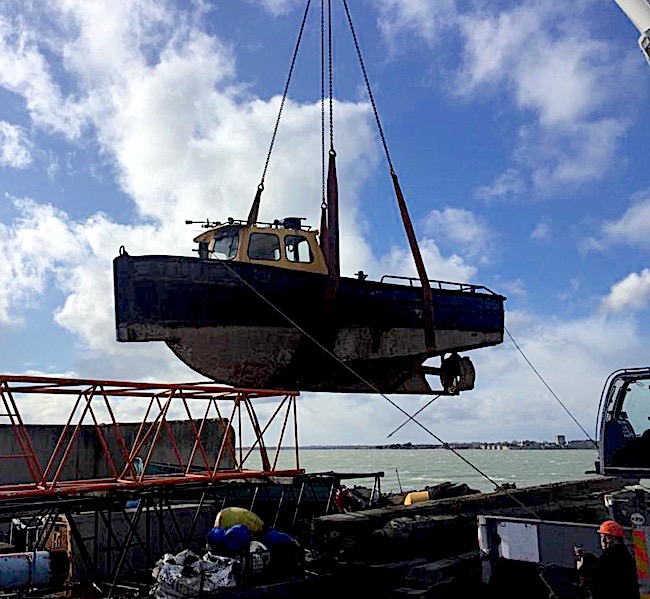
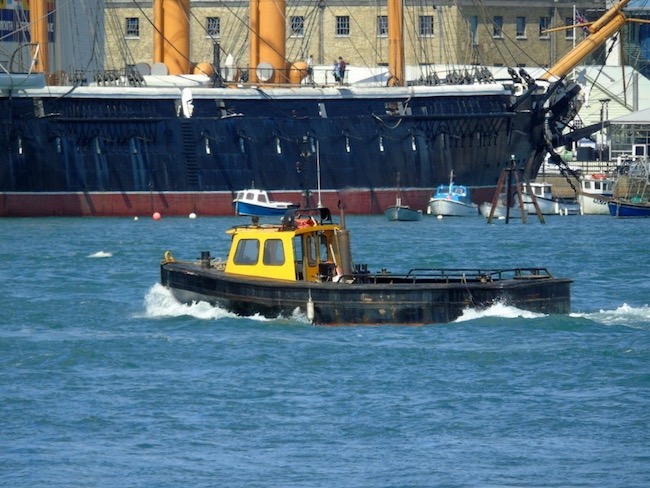
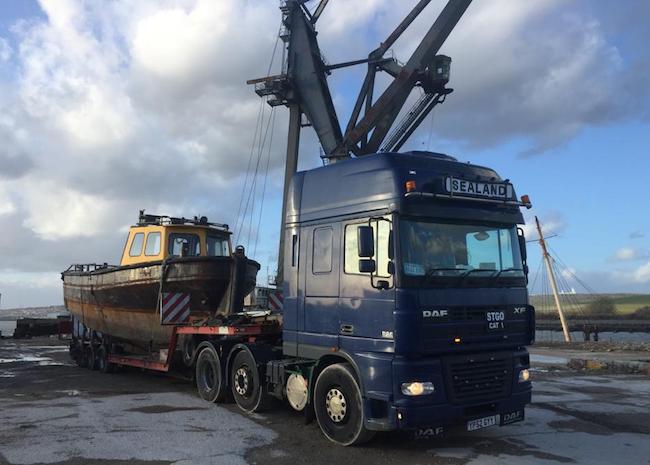
We bought Agwi for civils and dredging operations and for service as a workboat in the Liverpool dock and canal system. Agwi will work on berthing duties at the 350-metre Liverpool Cruise Terminal, before handing over that duty to Neptune, another of our vessels. She will also be involved in underwater ploughing, surveying and diving operations. Her hull has already been blasted and painted during a mini overhaul.
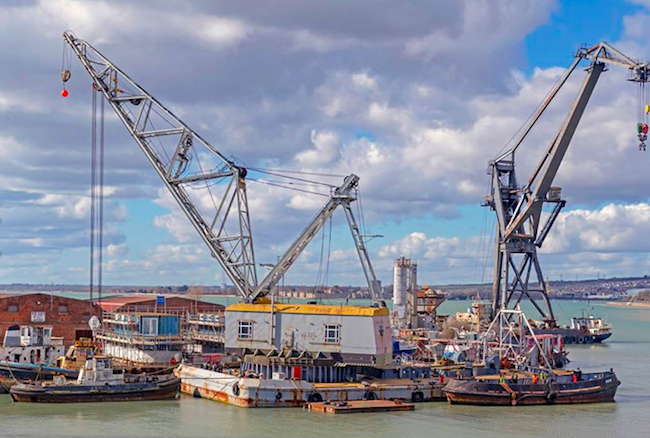
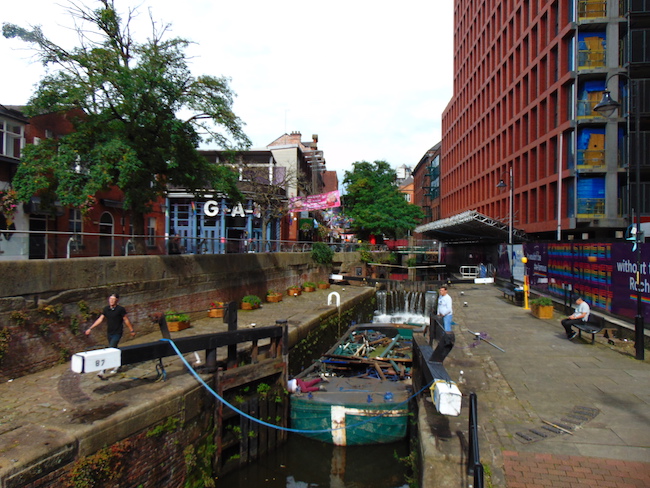
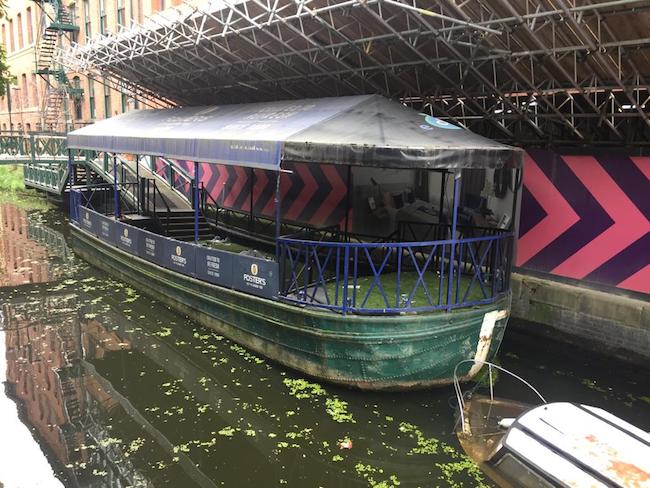
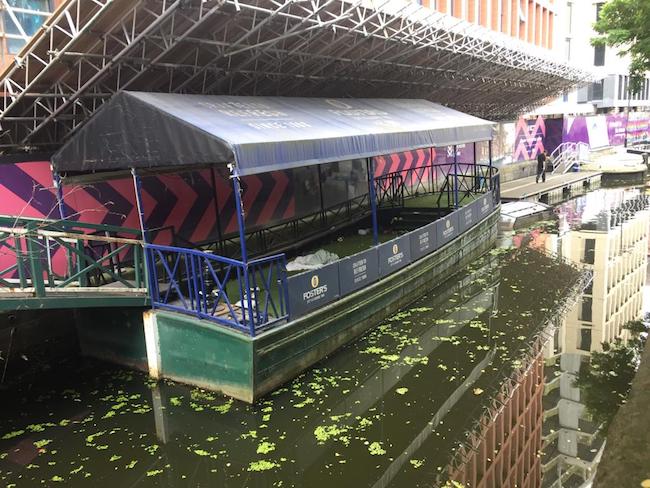


In the later years of her long working career the barge that turned up in Canal Street had lost her magnificent L & L transom when she was cut down in Yorkshire and given a new welded flat stern for working with a pusher tug.
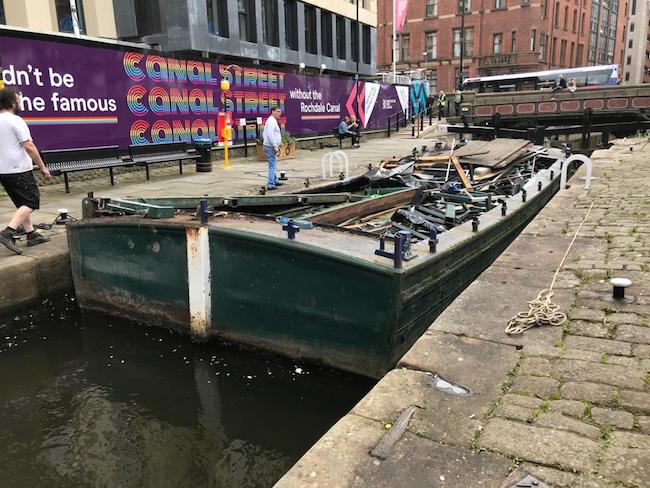
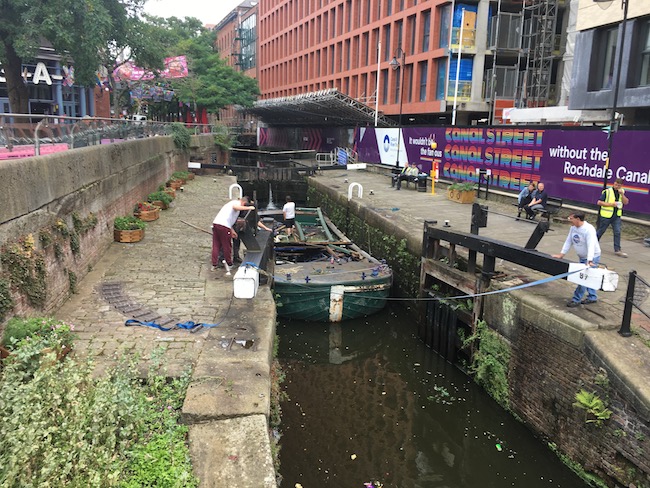
Then, to the delight of dozens of city flâneurs, the C&RT men opened a series of valves and gate paddles and poured millions of gallons of water down the cut, building up a big head of water behind the old girl that eventually surged her through various pinch points using champagne cork technology. Water flooded the towpaths, but it worked.`
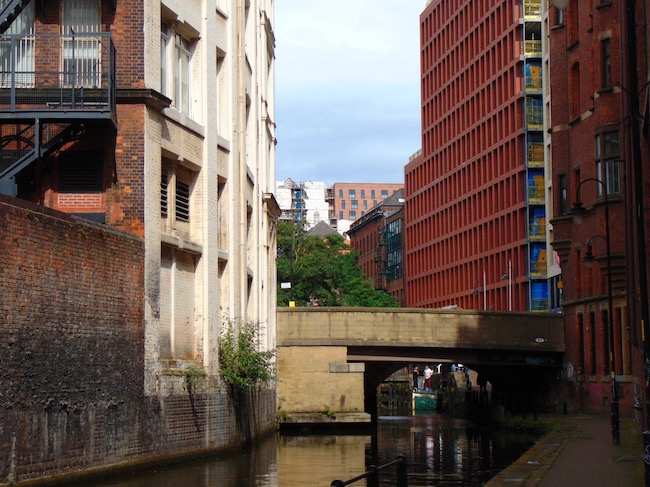
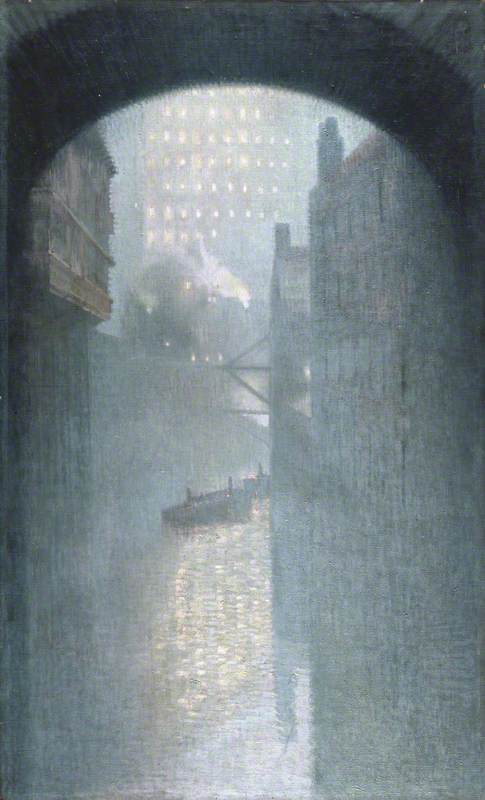 India House, Manchester by Adolphe Valette Manchester Art Gallery
TWIZZLE CREEK TO RIVER ASLAND
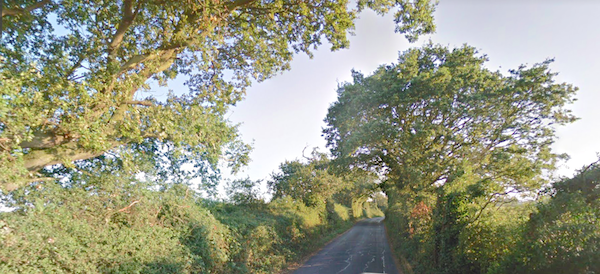
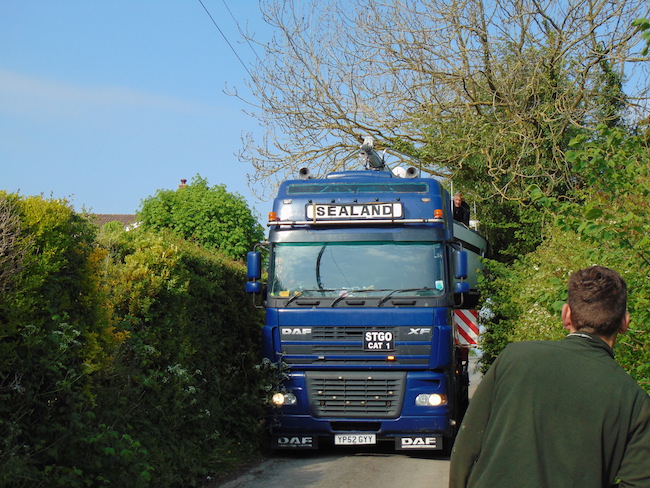
The 8-tonne, 13-metre cruiser-racer, designed by Kurt Schröter, was built at the Hacker Werft in Travemünde on the Baltic Sea in 1997.
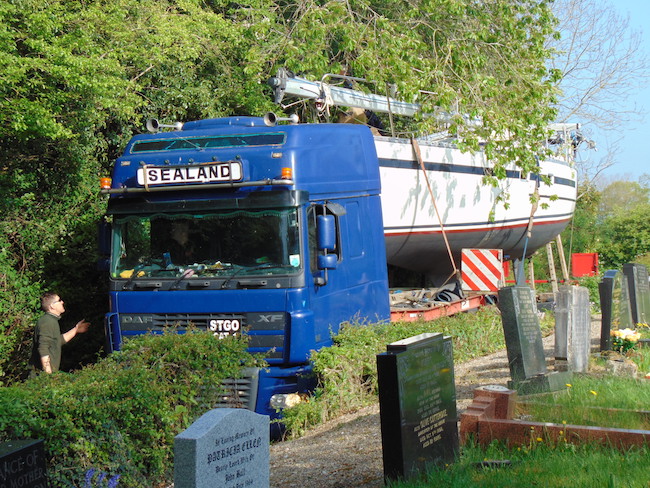
Often times I have crossed the sands
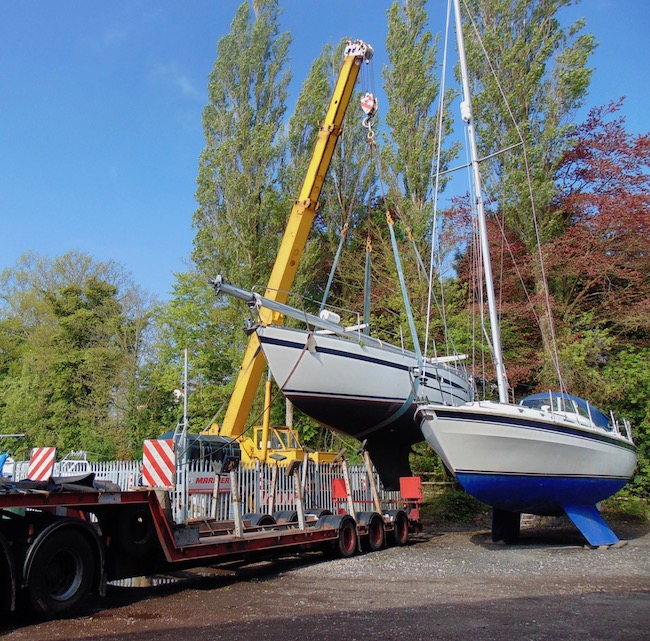
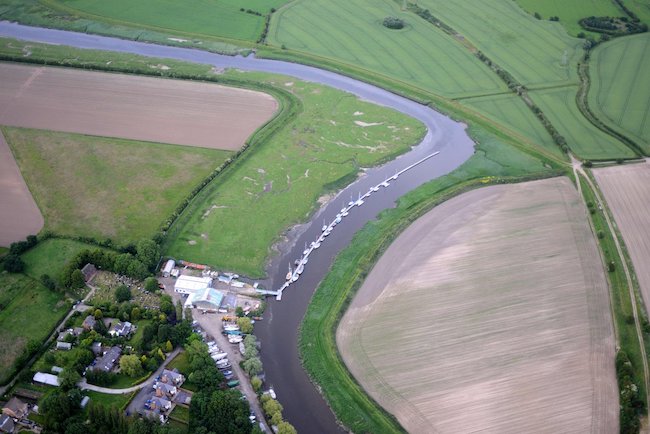
Boat Transport News 2018
In 1875 thousands of mill hands walked to the lake from Smithy Bridge railway station to watch Captain Matthew Webb training for the first recorded swim across the English Channel. In Victorian days there were often three steamers at work on the 53-hectare lake that had been created in 1800 to feed the locks of the trans-Pennine Rochdale Canal.
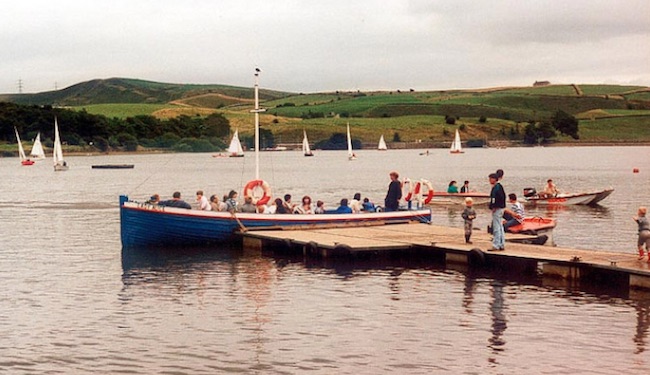
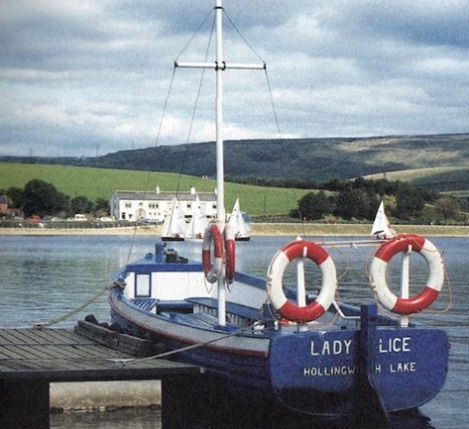
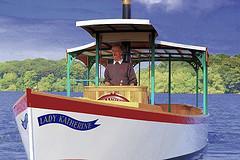
The 20-horsepower replica Victorian steam engine, fed by a 21st century bio-fuel boiler, eventually proved "un-economic" for occasional cruising days on the idyllic mere and has now been replaced by a 13.5 bhp Beta Marine 2-cylinder diesel.
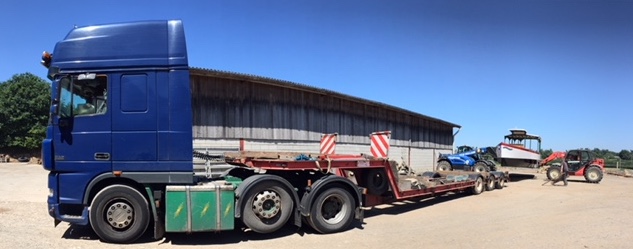

WINDSWEPT AND THE WHIRLWIND
 The bilingual 11 year old would be described by Orson Welles in 1967 as 'the greatest actress in the world'.
Granville Buckley was a former sailing trawler skipper. He had sold his own 58ft jigger smack Alicia FD 60 at Fleetwood in 1905. In the summer and autumn of 1939 he sheltered Jeanne with her mother and her baby sister aboard the hefty 'double-ender' that David Hillyard's men had built in mahogany on oak at the Ropewalk in Littlehampton in 1936. The future star of Louis Malle's film Lift to the Scaffold, of Jules et Jim for François Truffaut and three movies for Orson Welles, was the unexpected and sometimes unwanted daughter of a 20-year old Lancashire girl who went dancing with the Tiller Girls at the Folies Bergère in the roaring twenties. So the first words ever delivered by Jeanne Moreau were spoken in Lancashire-accented English on a summer holiday at her grandfather's house in Oldham. He called her Chatterbox. Fifty years later, after marriages and affairs with famous Frenchmen, with men as varied as Pierre Cardin and Lee Marvin, after a dramatic Hollywood separation from the director of The Exorcist and after being named as a co-respondent by Vanessa Redgrave, 'La Moreau' was asked if she had ever loved an Englishman. “Yes”, she said. “He had the impossible name of Granville. He was my grandfather.“ She told the French novelist Yvonne Baby that grandfather was “mad about Joseph Conrad.”
I think he once met Conrad. He wrote articles for the maritime journals, acquired himself a boat with the magnificent name Windswept and rented himself out with the yacht in summer, giving courses in navigation. There were books by Conrad in his library and I read them all in English. I am totally bilingual. I went to school in England during the war.
 Orson Welles, Michael Bryant, Jeanne Moreau and cameraman Willy Kurant filming off the Croatian island of Hvar on Welles's unfinished 1966-9 film The Deep. WILLY KURANT
Biographer Marianne Gray noted in 1994 that Jeanne Moreau could still sing Vera Lynn's 1939 version of the daily envoi given by 'Uncle Mac' at the end of every BBC radio Children's Hour: “Goodnight, children, everywhere”. “If my mother had left my father sooner. I would have been an English actress.”

Baby Jeanne meant that Kathleen would never tour America with the Tiller Girls. For Anatole Moreau's extended family, most of them still living in villages in the ancient central province of the Bourbonnais, a Moreau baby by a Protestant dancer was a very different kind of disaster. Anatole, Kathleen and Jeanne lived in both Paris and Vichy, before splitting up after a bankruptcy in Vichy landed them in a dreadful existence in two rooms next to a Parisian brothel near Pigalle. Kathleen came home to her mother and father in Brighton with Jeanne and a new-born baby Michelle. Jeanne joined the Brownies in Sussex. It was only the war that took them back to France. On January 1, 1940, Jeanne and her mother boarded the Newhaven - Dieppe ferry, pushing Michelle in a pram and returning to Paris five months before the German invasion. In the late summer of 1940, with Anatole Moreau trapped in the unoccupied part of France, Kathleen, Jeanne and the baby were turned back by the Germans in a column of Parisian refugees intercepted at Orléans. Kathleen was ordered as a British subject to report daily to the Gestapo in Paris. At 15, in German-occupied Paris, Jeanne skipped a Latin class for a secret visit to Jean Anouilh's Antigone, a play about the rebellious daughter and sister of Oedipus: It was the coup de foudre. I was Paul on the way to Damascus. I knew at once I wanted to be an actress.Her father hit her across the face when she told him what was going to happen: My father was drunk and the first word that came out of his mouth was putain - whore. To be an actress was to be a whore. The 'greatest actress in the world' is now buried in the cemetery at Montmartre, not far from the site of her father's bistro and very close to the grave of her lover François Truffaut.
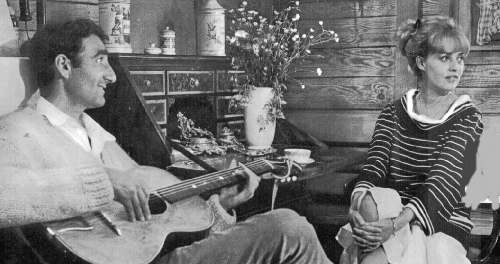
Qui m'fascinaient, qui m'fascinaient Y avait l'ovale d'son visage pâle De femme fatale qui m'fut fatal De femme fatale qui m'fut fatal
The archipelago is named after Aeolus, the mythological Greek god of the wind, and perhaps for good reason. The winds, together with strong currents, unpredictable weather conditions, make the islands one of the most dangerous places for seafarers to navigate. After surviving wartime government ownership and seven different British owners between 1947 and 1978 Windswept had been restored as a major prize-winning project by the Tecnomar yard on the banks of the River Tiber at Fiumcino near Rome. Disaster struck five months after presentation of a 2003 restoration of the year trophy to the Italian craftsmen for their work on Windswept. 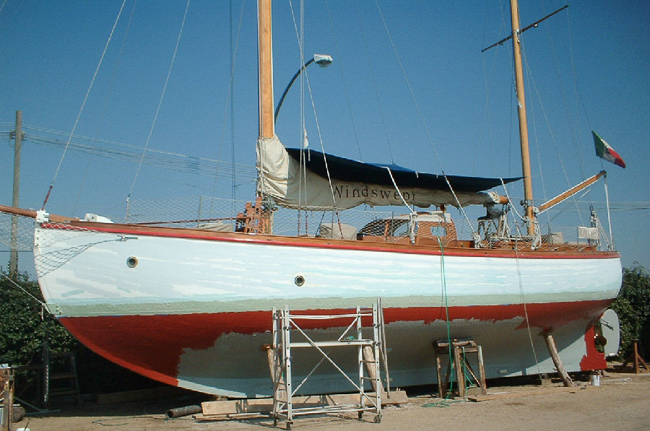
“On August 1, she was caught in a fierce thunderstorm off Panerea. She just exploded on the rocks of the island. It is very sad because she was a magnificent boat.”
Wrecked: August 1, 2003, Island of Panerea, Tyrrhenian Sea. Length overall: 54ft 0in [16.45m] Length waterline: 47ft 0in [14.32m] Beam: 13ft 3in [4.03m] Draught: 5ft 9in [1.75m] 31 tons Thames Measurement Lloyd's Register: 165291
Emiliano Parenti of Tecnomar La Moreau: a biography of Jeanne Moreau by Marianne Gray, New York NY 1996.
FROM GRAVEYARD TO LAST CHANCE SALOON 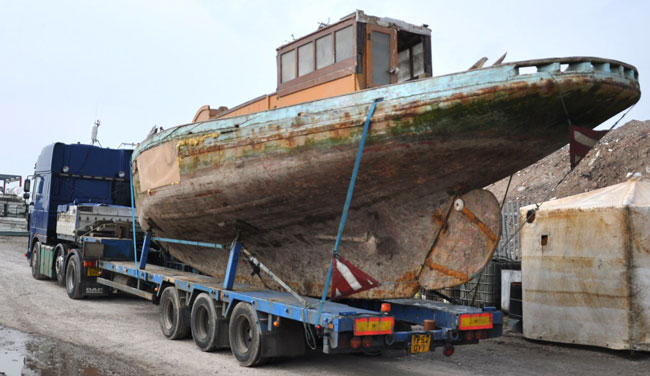
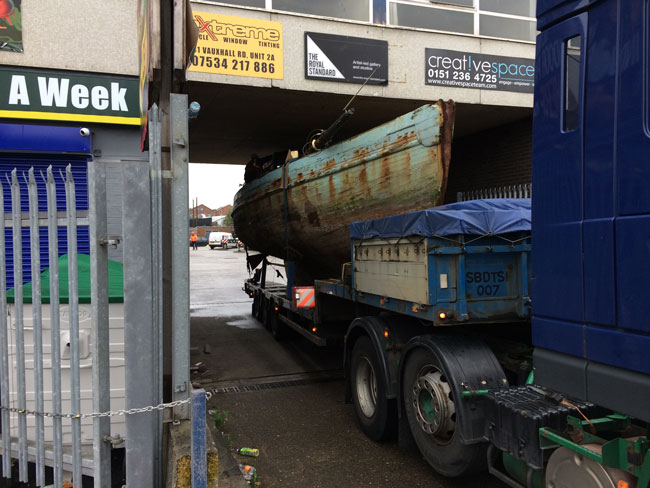
Built by James Armour at Fleetwood in 1911 for Frank Hughes of Egremont, Wallasey, the gaff-rigged trawler Mystery II won the Magazines Sailing Club Regatta in her very first summer. Seven decades later, after two world wars and a hard life fishing from Conwy in North Wales, she was still fast enough to come second in the 1990 Liverpool Nobby race, using a suit of borrowed sails. Moored for years as the mysterious LL59 in the tideway near the Tranmere Oil Terminal, she was well-known to thousands of seafarers. Norval "Spike“ Brown owned her for fifty years. The Liverpool insurance broker Tom Middlebrook heard that she was in trouble early this year. The 41ft 6in nobby had been laid up near Riverbank Road in Bromborough, facing demolition. Days later the Nobby Owners Association, formed in 1987 to "encourage the restoration of traditional Morecambe Bay prawners and Lancashire nobbies“ organised a rescue by Sealand Boat Deliveries, to haul her into the Bluepoint yard at Liverpool while the association arranged an overhaul by craftsmen and apprentices at the community college in Vauxhall Road. By mid-summer, the association ordered Sealand and a crack lifting team from Roadcraft Crane Hire to hoist the 11.5 tonne hull from a car park, over a wall to land her on a second slave boat trailer for rolling for restoration at the end of a narrow alleyway at the side of the college.
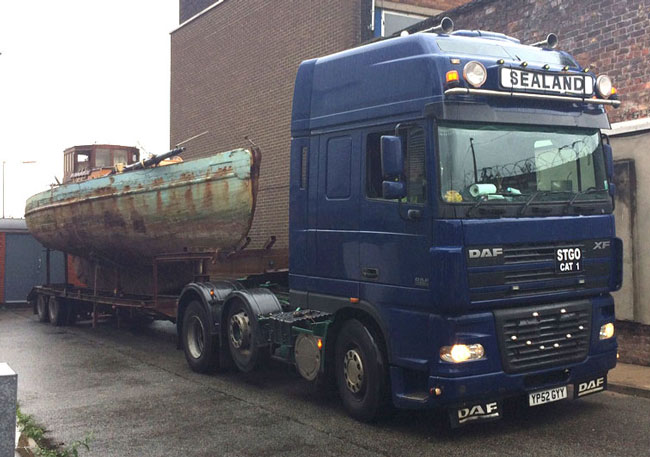
ARCTIC WHALE WATCHERS Four weeks earlier on December 4, the crew of the specialised Redbay Stormforce 9.1 boat had been at sea off the Inner Hebrides filming basking sharks. Team leaders Shane Wasik and Luke Saddler have filmed both sharks and dolphins from tiny video cameras mounted on radio-controlled drones. The basking shark Cetorhinus maximus is the world's second-largest fish. diveboat was hoisted ashore at Dunbeg by Oban. Four days later she was aboard the reefer ship Svartfoss at Grimsby, bound for a rendezvous in the Arctic with the killer whale, Orcinus orca, largest of the world's oceanic dolphins. 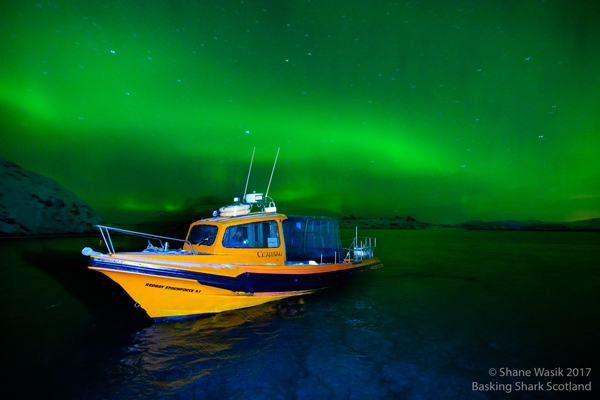
The twin hulls of the 23-tonne Bibby HydroMap coastal survey vessel ride wide on high-tensile steel plates chained across a low 300mm deck height steerable trailer, keeping overall height under motorway bridge safe clearance on the 3-day haul over the three North British summits, M62 Windy Hill, M6 Shap and Beattock on the wide load route from the North Sea to the Firth of Clyde. PROTEUS is named after an early Greek god of rivers, seas and oceans and works on advanced offshore geophysical surveys with side scan sonar, sub-bottom profilers and marine magnetometers. With a draught of only 1.0 metre she can operate in shallow seas up to 60 miles from safe havens. 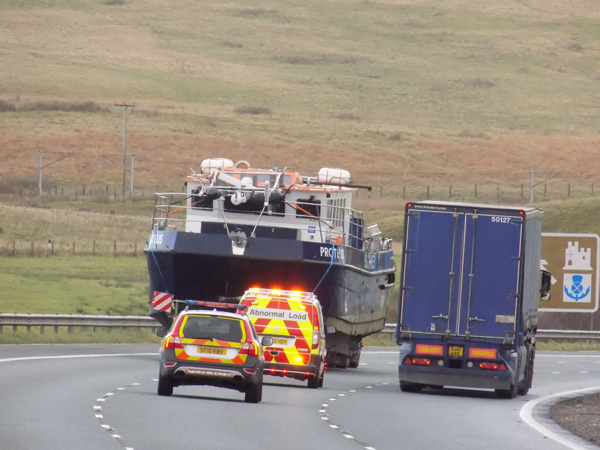 CLICK image for more Thomas Wilson action pictures
A slick move from Antigua to Wicklow 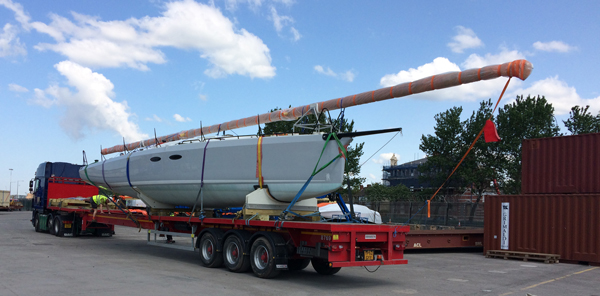 In an epic 2015 aboard TEASING MACHINE, the French oil trader Eric de Turckheim had won his class at Cowes Week, taken the Channel Race outright and finished second overall in the Rolex Fastnet Race. But ever since he went offshore racing at the age of 18, he had dreamed of competing in the Sydney - Hobart Race. To make this happen, the racing division of Peters & May in Southampton shipped TEASING MACHINE from France to Sydney by container ship in time for the Boxing Day start of the notorious heavy weather race across the Bass Strait.
Denied overall victory only by light airs on the very last 12 miles up the Derwent River from Iron Pot to Castray Esplanade, the TEASING MACHINE team took their class, finished 11th overall and delighted their skipper. 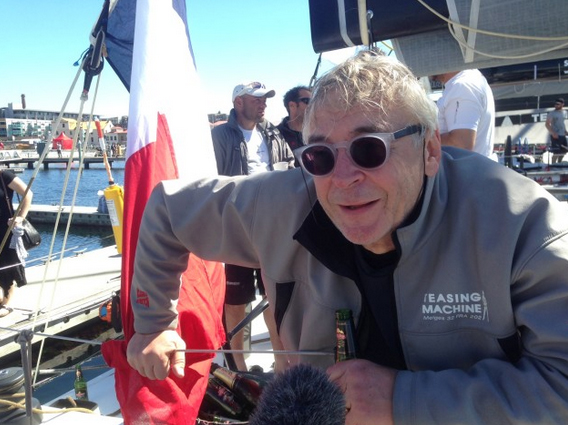 We went out to sea. We saw it coming on. It was very brutal and then that was it. We just went down south as much as we could. We had to deal with the next transition. 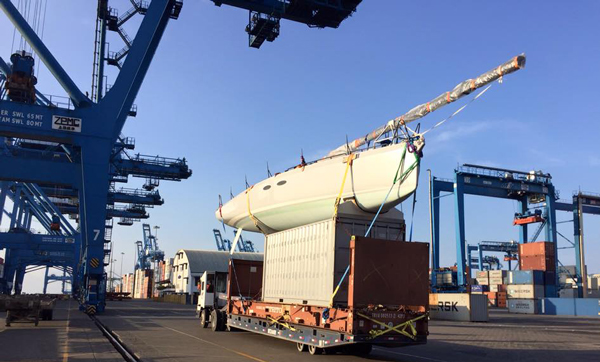 Once again winning IRC One in only 68 hours elapsed time and claiming third overall for the race, de Turckheim was on hand to describe his experiences and the differences between racing in the Bass Strait and competing in the Caribbean: It was a big trip to get the boat here from Australia, including sailing 1,500 miles upwind from Panama, but we knew we had the potential to do well in this race. This is a great race and I will always remember the leg from La Desirade to Barbuda, averaging 15 knots for 140 miles with full sail and warm water cascading down the deck; it couldn't be better. We like to win but not at any cost. The ambience on board is fantastic and we were often toasting our performance with a small glass of red wine.
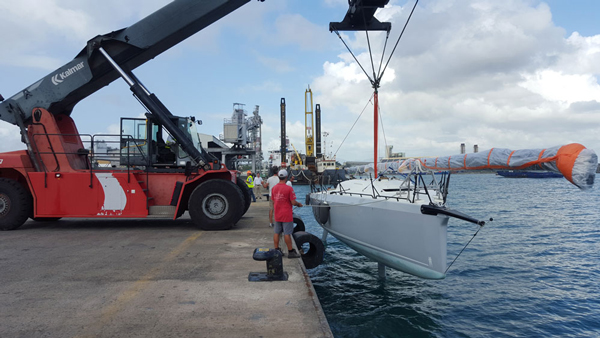 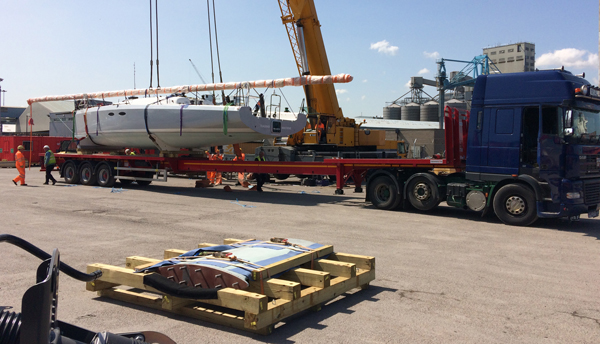 TEASING MACHINE sailed down the Mersey in June, bound for Wicklow as one of 63 starters in a memorable Volvo Round Ireland Race, delighting the veteran Irish yachting reporter W.M. Nixon by making ‘a proper job of tide-dodging inside the Wexford banks’. Nixon described an epic 704-mile battle between the three MOD trimarans in the race, won in a record 38 hours, 37 minutes and 7 seconds by the Sultanate of Oman’s flagship Musandam-Oman Sail: The craft and guile behind the crew of TEASING MACHINE again delighted Mr Nixon at afloat.ie : Eric de Turckheim’s Teasing Machine was both consistent and brilliant, and on Wednesday tacking down the southern part of the North Channel, she was neck and neck with Ross Hobson’s two-handed canting-keeled Open 50 Pegasus of Northumberland. 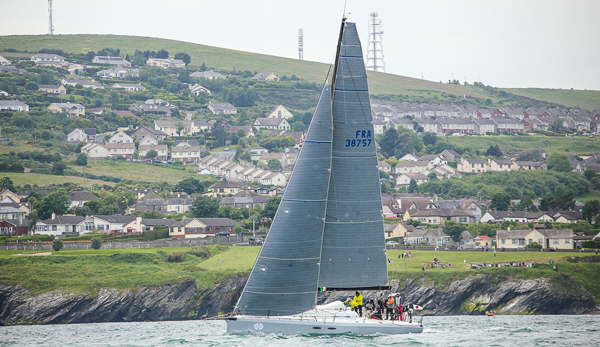 Pictures thanks to Peters & May, Bruce Montgomery, Sealand Boat Deliveries and Afloat.ie
From Zürisee to the Da-ow-a-ga Carnelian Bay, California, May 14: From her birthplace in Canton Schwyz ENCHANTED has arrived at her new mooring on Lake Tahoe, 1897 metres above sea level. The 10.3m Pedrazzini Special Runabout, largest in the current range, left the lakeside workshops of Claudio Pedrazzini at Bäch am Zürichsee on April 4, after final trials on the lake known in Swiss German as Zürisee.
The rare fruit of 4,000 man hours of work by 15 craftsmen and apprentices, led by the grandson of the founder of the 102-year old firm, was shrink-wrapped at Bäch am Zürichsee by Neil Joseph from Poole in England, for transport to Lake Tahoe, a vast mountain lake not discovered by Europeans until 1844 and then known to the Washoe tribe of native Americans as Da-ow-a-ga. 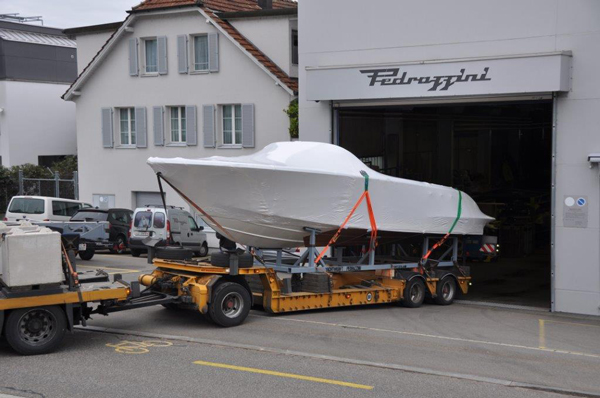 Transportbedrijf Van de Wetering BV delivered the mahogany masterpiece from Switzerland to Zeebrugge in Belgium for a deep sea voyage aboard the 61,328 GRT car carrier MV Toscana via the Panama Canal to Port Hueneme, from where Californian trucker Warren Moger hauled her 500 miles into the mountains of the Sierra Nevada, climbing 6,325 feet from sea level to the Sierra Boat Company at Carnelian Bay. 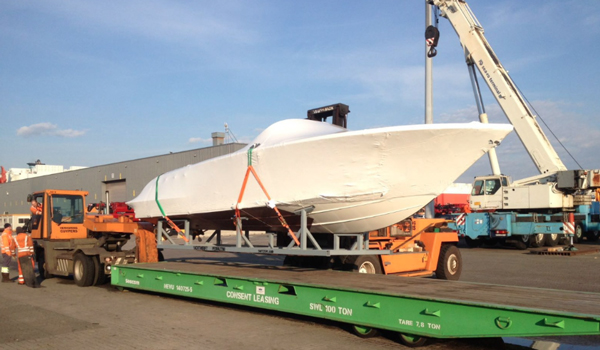
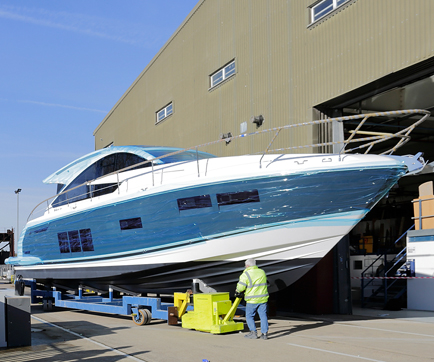 The Targa 48 GT was destined for Bates Wharf, London agents for Fairline, after managers and workers at the new firm had first of all honoured contracts by completing all boats under construction when the old firm went into administration. Russell Currie, the new managing director, said, “We are delighted that today has seen the first boat to roll off our production line since our purchase of Fairline Boats from administration at the end of January. We have been focusing on completing existing orders to ensure no customer of Fairline Yachts from anywhere in the world loses confidence in our ability to provide them with their new boat. “As a result, we have experienced a surge in orders from our dealer network, for both stock and retail sold boats for this year and next. With a healthy forward order book, some outstanding future product designs, a skilled and passionate workforce, a committed dealer network and a loyal customer following, Fairline Yachts is on its way to getting back to where it belongs.”
Two Russians have bought Fairline for less than the price of a superyacht. 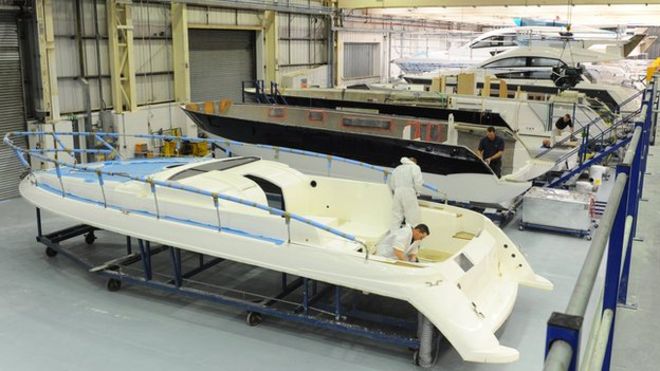 Russell Currie, manager of Fairline North Mallorca and former engineering director of Sunseeker International in Mallorca, is the new managing director and the Oundle factory will stay open and employing around 100 staff with a plan to build between 30 and 40 yachts this year.
The Corby works and the base at Ipswich marina will not re-open. I am delighted to have been appointed Managing Director for Fairline Yachts. With the resources of the investors, coupled with the expert knowledge of the management team and our energy and passion for the brand, the structure is in place for a great future for Fairline Yachts. We will focus on creating high quality luxury motor yachts that boaters will want to own and dealers will want to sell.
Alexander Volov and Igor Glyanenkos were described this week as British-based shareholders in the media technology business Megahertz and “passionate about boats.” 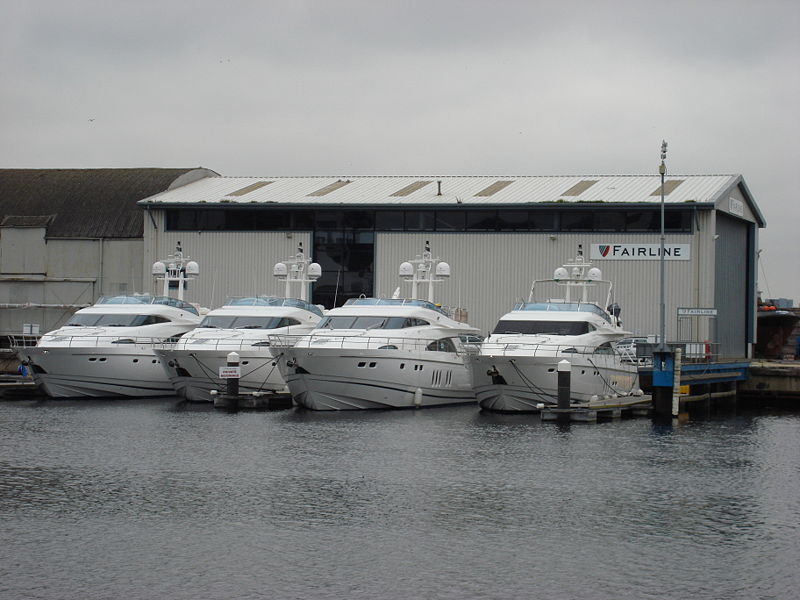 Fairline Squadrons at the Ipswich testing base in 2007. Oxyman, Creative Commons Yacht Transport News 2015 TO THE LIMIT AT GLASSON DOCK Moving a 55ft blue water ketch from the Lune to the Humber. 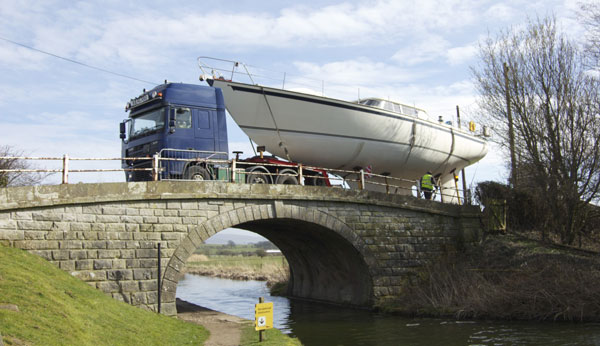 SHEARMYSTE, a 26 tonne, 8-foot draught, aluminium alloy ketch, built by Thrislington of Newton Aycliffe in 1984 to a Laurent Giles design, was bound for Hull when a team from Sealand Boat Deliveries and Davlyn Marine loaded her at the Glasson Basin yard to within two inches of the safe motorway bridge height.
But with a ground clearance also measured in inches, would the super-low trailer clear the canal bridge before crossing a second humped-back stone bridge over the River Conder?  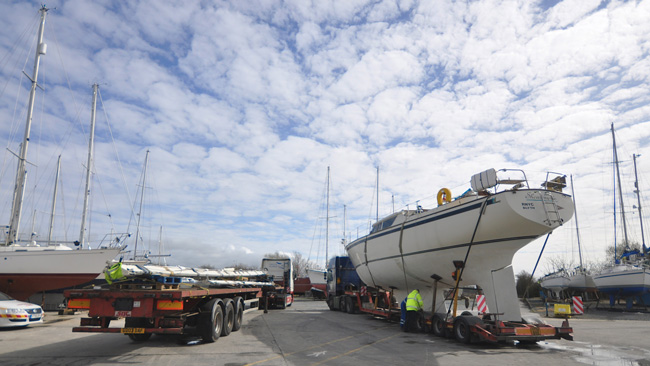 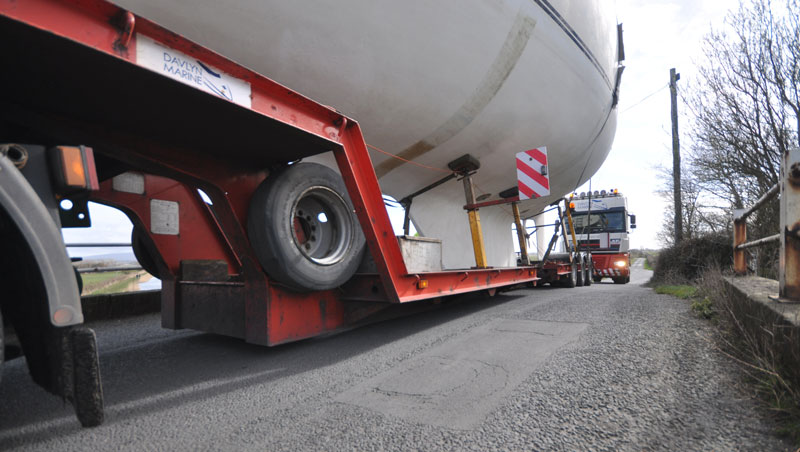 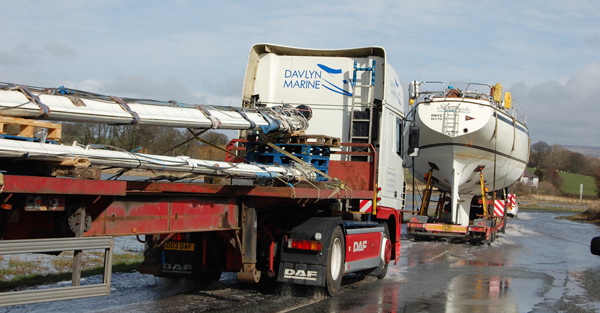 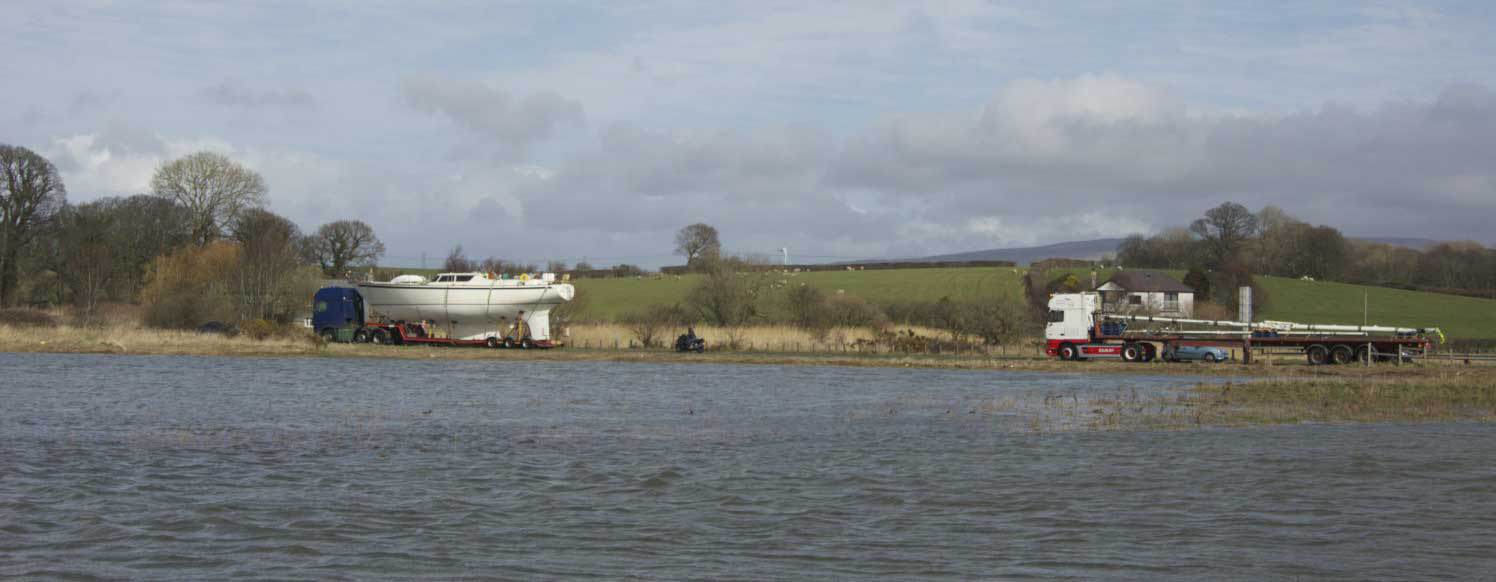 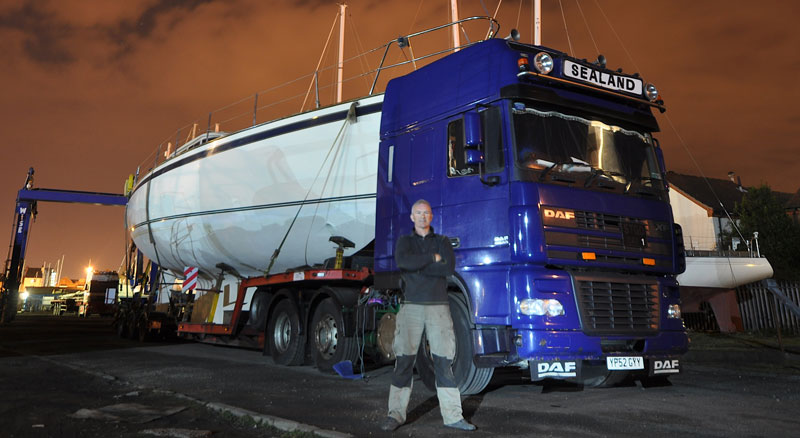 Re-launched at Hull Marina 24 hours after lifting at Glasson Basin Marina. CLASSIC RESCUE FROM WINTER IN THE FIRTH OF FORTH A fine 1907 Mylne sloop has been rescued for restoration. 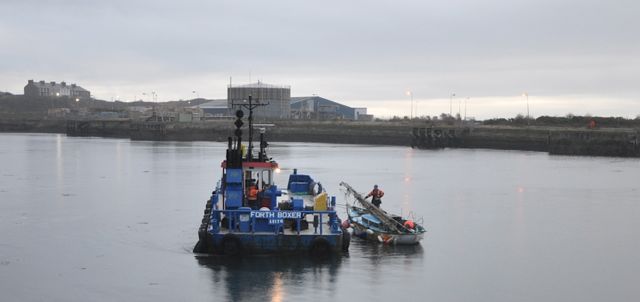 The next stage of the rescue plan involved the Briggs Marine multicat FORTH BOXER bringing the old girl alongside a mobile crane for road delivery to Steve's Lancashire workshop by Sealand Boat Deliveries. 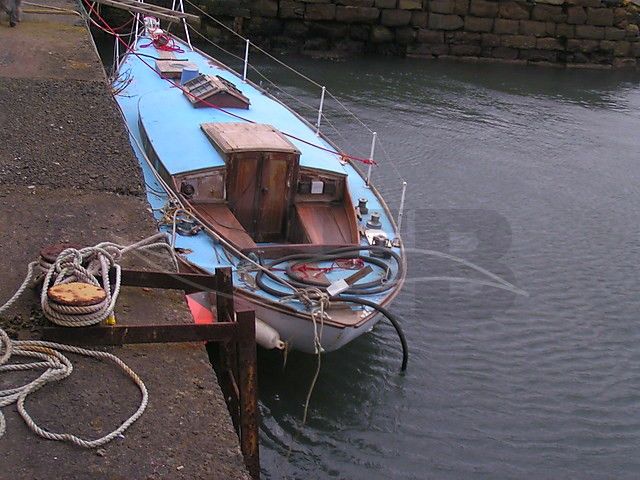 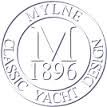 In 1968, when the elegant double-ender was owned and raced by Dr G. Henderson from Garelochead, she came third out of 34 starters in the final leg of the Clyde Cruising Club Tobermory Race. Her new owner does not yet know how her long career in Clyde racing led to the exposed mooring by the quay in Kinghorn, Fife, a harbour inaccessible to lorries on a coast 'much encumbered with rocks' near the cliffs where King Alexander III of Scotland fell to his death after his horse stumbled in 1286. The 6500kg 1.88m [6ft 2in] draught hull has now been craned into a workshop cradle in a yard near the River Douglas at Newborough, Lancashire. 
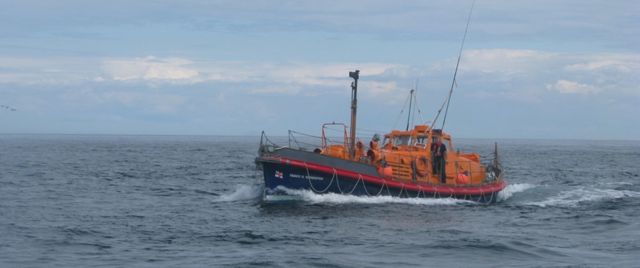 A VERY TIGHT JOB 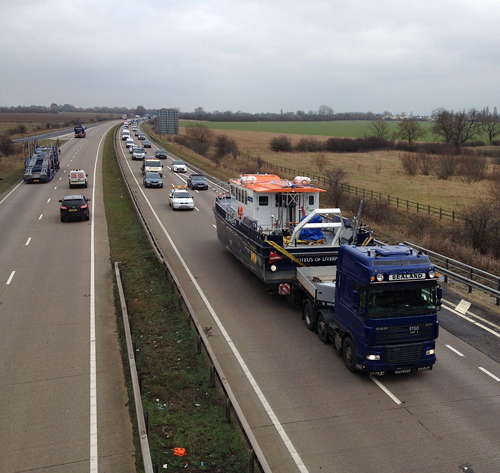 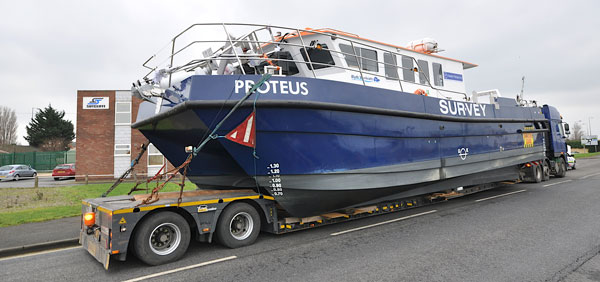 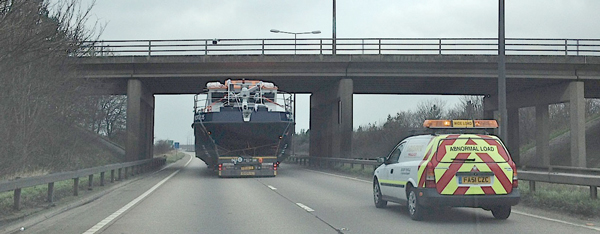 Bound for Scotland on M180 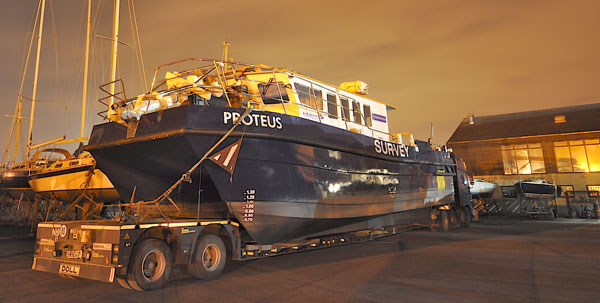 Proteus, a son of Poseidon, was an early Greek god of rivers, seas and oceans, Homer's 'Old Man of the Sea', who would change his shape to avoid foretelling the future, eventually giving us the word 'protean' for versatility, flexibility and adaptability. The crew left their ship's automatic identification system switched on during the cross-country move, allowing their managers the rare sight on office laptops of a maritime AIS-equipped vessel clearing Beattock Summit at a steady 45 miles per hour. 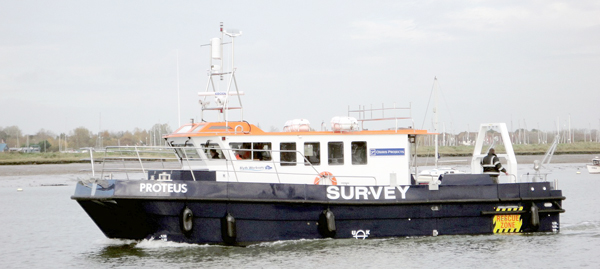 High grade positioning systems include an Inertial Navigation System (INS) and acoustic Ultra Short Baseline (USBL) acoustic positioning system for towfish tracking. The large aft deck features a moon pool fitted with a hydraulic retractable hydrodynamic gondola designed to house a high grade multibeam echo sounder systems. PROTEUS is permanently mobilised with an AGO-CSW7 electric sonar winch which when combined with the hydraulic A-Frame, allows for the safe launch and recovery of geophysical equipment including side scan sonar, sub bottom profilers and marine magnetometers. A hydraulic lifting winch enables oceanographic and benthic survey equipment to be launched and recovered from the vessel including small inspection class ROV/drop down camera, various grab sampling equipment and benthic trawls. 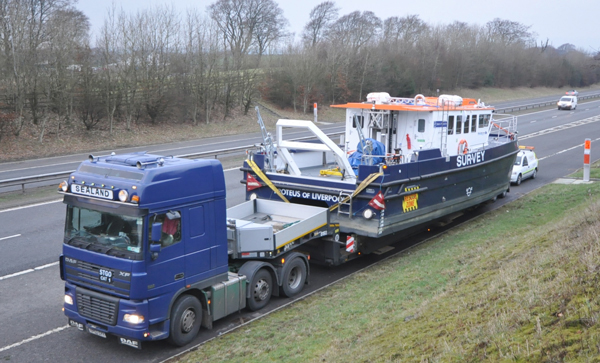 CLICK for PROTEUS catamaran delivery procedure pictures. CLICK for PROTEUS specification. ANOTHER TIGHT JOB 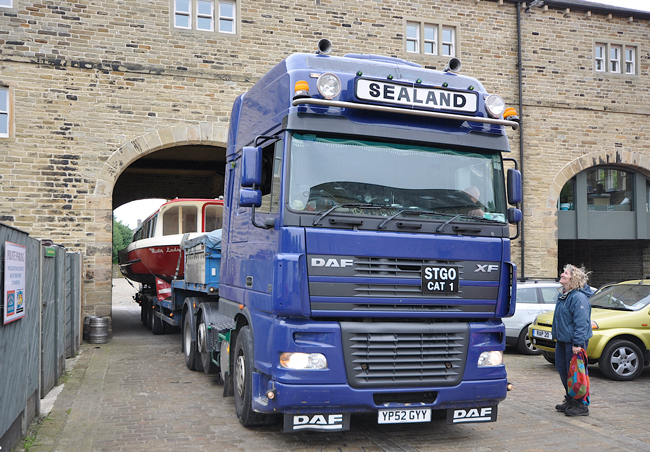 This is as good as it gets at this key Pennine canal base, where the Calder and Hebble Navigation of 1759 meets the transpennine Rochdale Canal of 1804. MISTY LADY, formerly FREE SPIRIT, a 10.36m x 3.65m wide F.B. Wilds Bermuda 34 Broads cruiser had been re-fitting in a tight location in Lancashire before Sealand Boat Deliveries were called in to bring her to the Calder and Hebble. After double-lifting over narrow steel gates at Bury, the drivers were faced by the tight archway at Sowerby Bridge, the only road access point to the mobile crane launching pad. Her owners appear pleased. 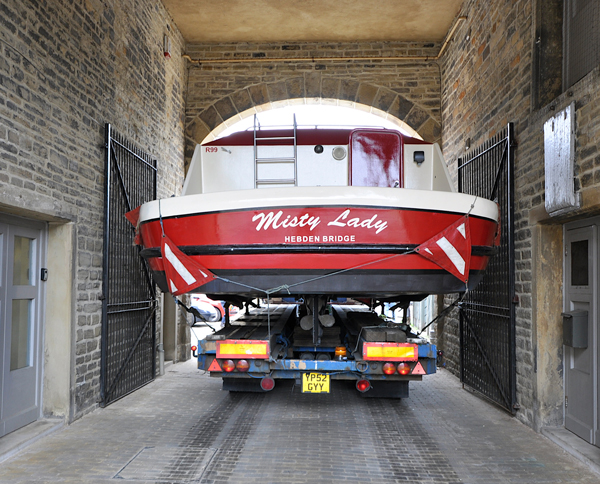 MANHATTAN 63 TO PSP SOUTHAMPTON SHOW 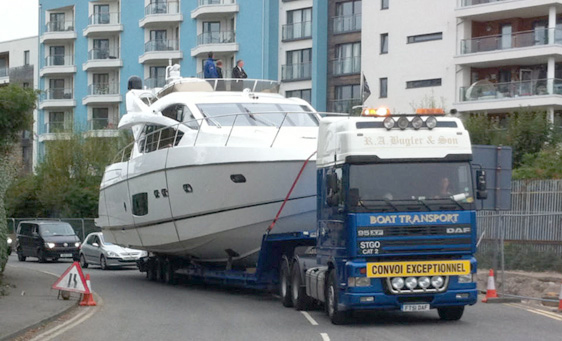 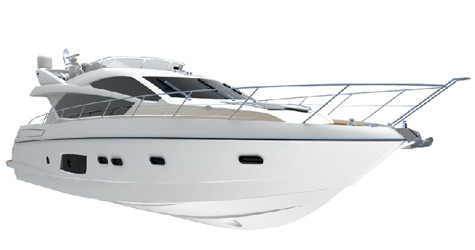 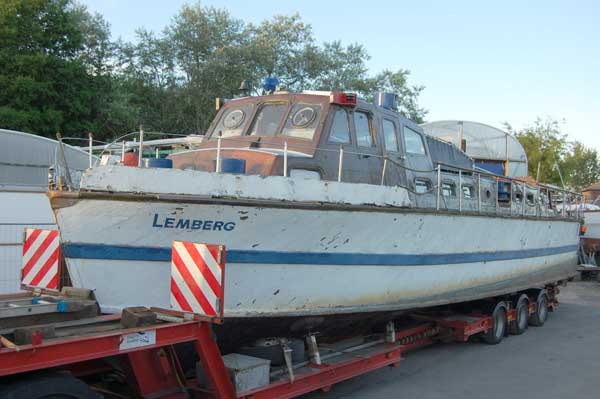 An outer layer of teak, specified for tropical service on her double-diagonal construction, granted this 48-foot High Speed Target Tower a long life. But few in 1942 would have forecast a sixty year career for a 12-tonne "Derby Winner Class" shipped by the Royal Army Service Corps to the supply port of Freetown in the year of the battle of El Alamein. Superbly preserved after half a lifetime on the River Thames and 59 years in the hands of one family, she is now destined for a winter berth under new ownership on the River Douglas in Lancashire. In 1947 Mr Roger Miller bought her from the military small craft disposals yard at Woolwich. His family retained her forward wheelhouse and most of her features. Fitting a pair of 6.354 Perkins diesels in place of her trio of revolutionary wartime Perkins S6Ms reduced her top speed to 12 knots but allowed the family to walk through the engine room from the forward cabin to the saloon. Each of her 21 sisters was built on the Isle of Wight by J. Samuel White or Groves & Gutteridge and carried the name of a racehorse winner of the Epsom Derby. Lemberg was a bay stallion born in 1907. He won the race in 1910 and lived a long life at stud until he died in 1928. His owner was just as lucky. Alfred Cox mysteriously campaigned a string of famous racehorses under the assumed name of "Mr Fairie". As a young man in Australia he won a share in a silver mine playing poker with Georgie McCulloch the mastermind behind the Broken Hill Mining Company, now BHP Billiton. 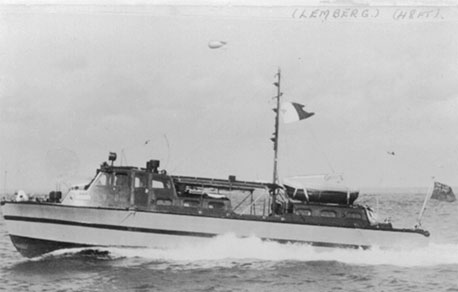 LEMBERG, delivered to the RASC in 1942 [RCT Museum].
J/111: NEW YEAR MERSEY ARRIVAL Barely eighteen months after the first of these strict one-design 36-footers raced during Block Island Week in the USA, sixty J/111s have been built in France and the USA and delivered to ten countries. Ten raced together at La Trinité-sur-Mer in Brittany in the summer of 2012. In a famous last-minute performance in 2011, a brand new French-built J/111 called SHMOKING JOE arrived by lorry in Hamble only 24 hours before the start of the 2011 Round Island Race. Phil Thomas and Duncan McDonald immediately raced her to win the IRC1 and IRC 1A divisions and finish sixth of the 400 competing IRC boats in the big 50-mile race. Sealand Boat Deliveries delivered JEZEBEL, complete with a 16.67m mast constructed by Hall Spars in a new carbon nano-tube material called Arovex. To lower her centre of gravity and deliver a boat with no more than 2.18m draught, the Johnstone brothers of J-Boats designed a hollow fabricated stainless steel fin with a flat-sided lead bulb. J/111s can accelerate to windward at over 7 knots and plane downwind at 17 knots. 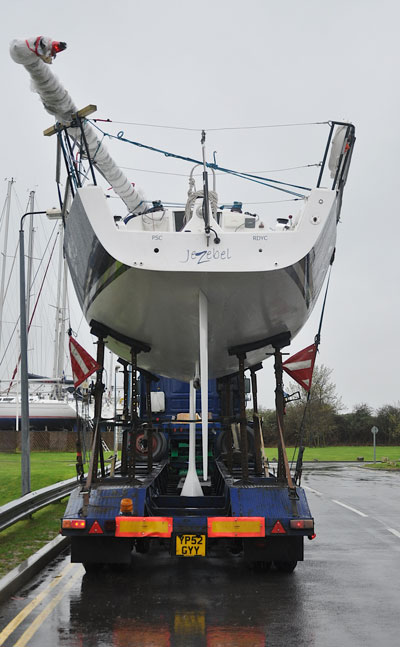 The J/111 is known for her narrow waterline beam and her open transom.
FINLAND TO VALENCIA ON HER BEAM ENDS 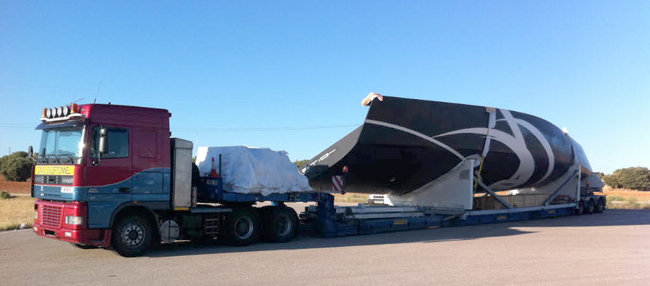 CLICK for pictures of the Bugler Transport long haul that saved twenty thousand pounds for the ambitious Finnish-Italian research project. ALBION CLIMBS A MOUNTAIN AT 106 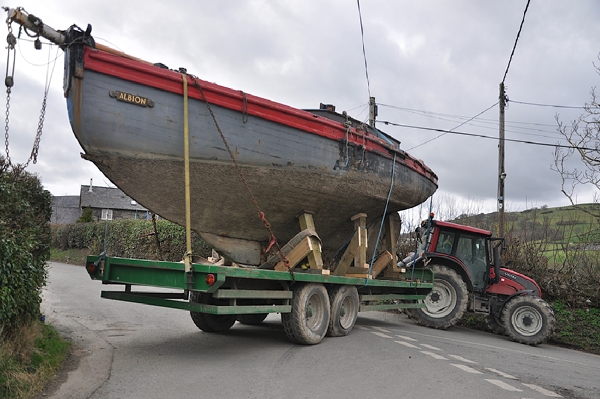 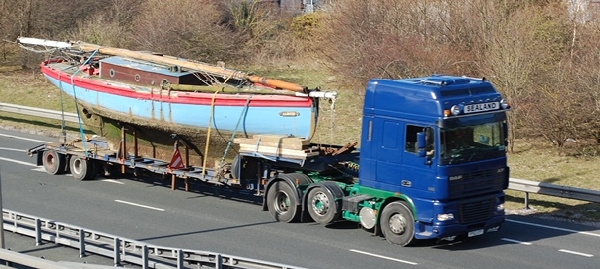 CLICK for full story and pictures of Dr Paul Smith's rescue of one of the most famous of the Morecambe Bay shrimpers. ICED PUMA IN NORTH YORKSHIRE 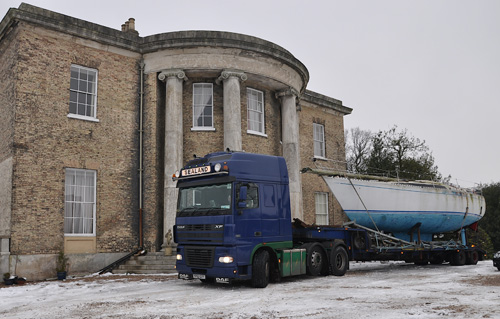 On the iced gravel of a steep and treacherous private road he soon passed the point of no return. The load was a 3.8m wide Spanish-built Puma 37 sloop destined for a mid-winter delivery across the high moors of Northern England to Whitehaven on the Irish Sea. VOLVO 70s OUT OF THE STEALTH ZONE 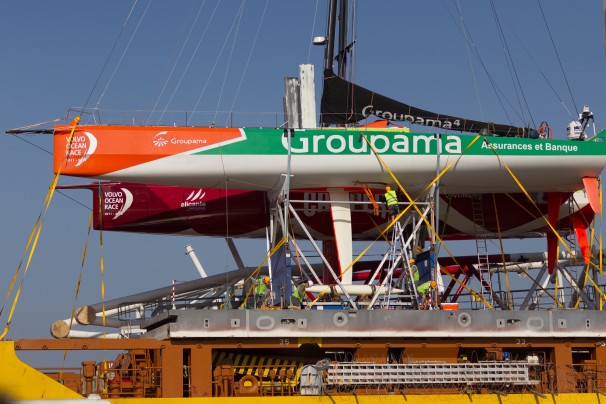 CLICK for Volvo Ocean Race anti-piracy operation report. 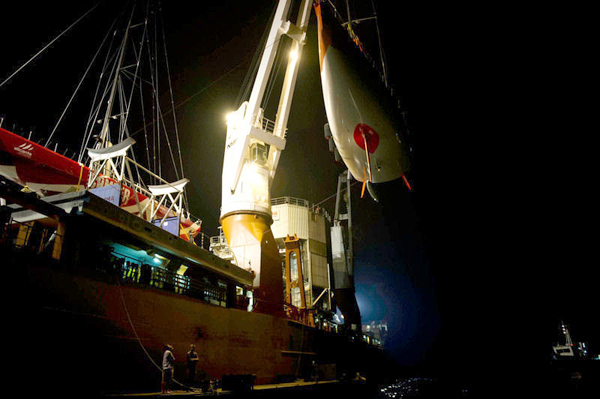 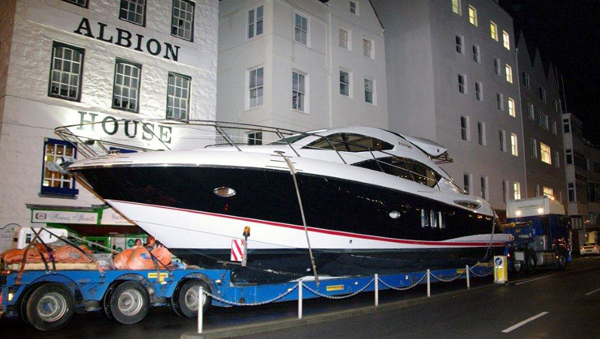  Chris Bugler at White Rock in St Peter Port, ready to roll FOOTSIE aboard the ro-ro ferry Commodore Goodwill for repairs in England. TONY RIVE RESCUING USTINOV'S NITCHEVO 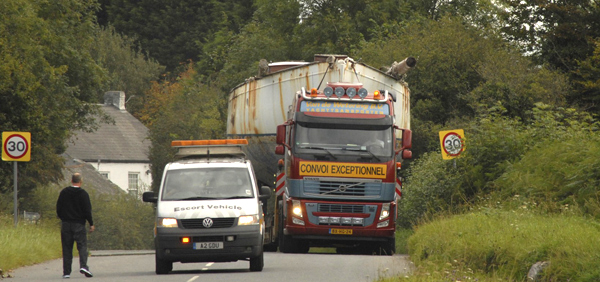 CLICK picture for story of MY NITCHEVO. 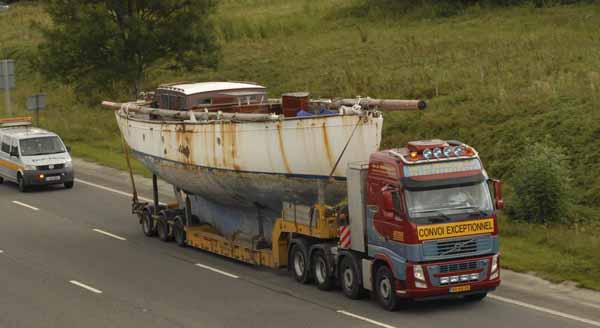 CLASSIC MOVE: CONNECTICUT TO CORNWALL IN 21 DAYS 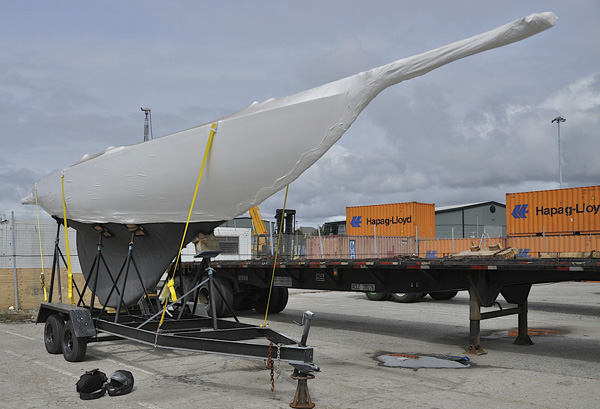 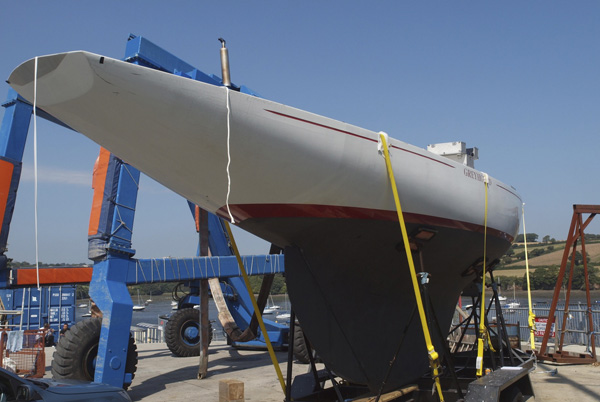
CLICK picture for full story of "the classiest OD of all".  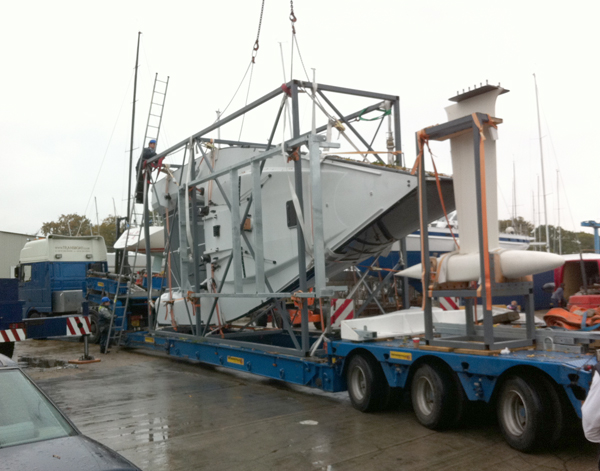  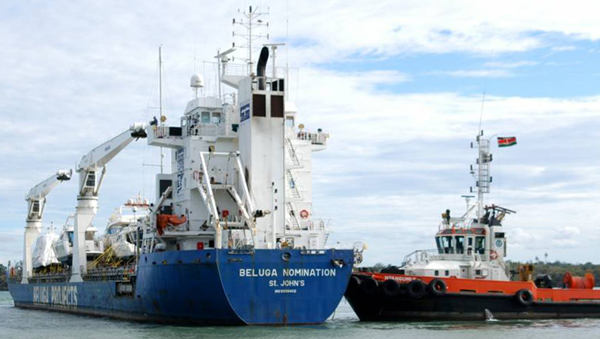
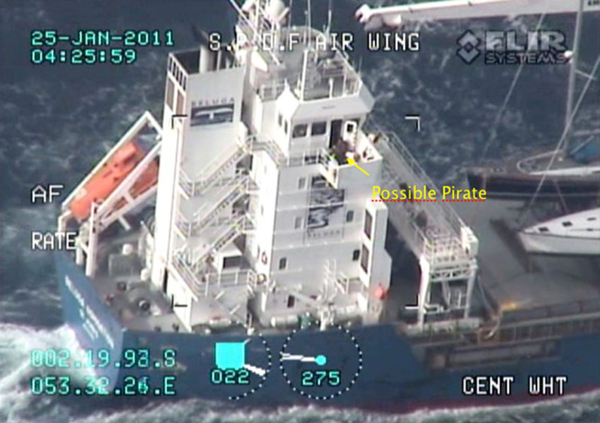 EXTREME YACHT TRANSPORT IN SOUTH ATLANTIC 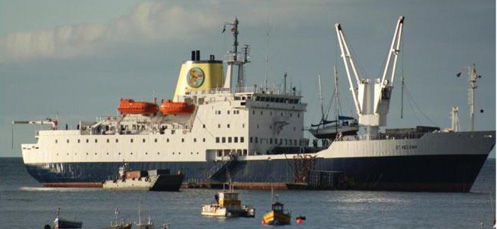 WILLIAM FIFE SCHOONER RESCUE  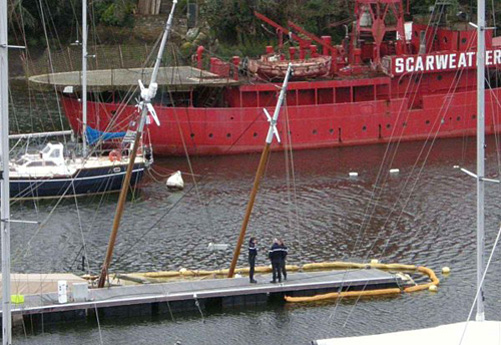
Crisis in Port Rhu 
CLICK for more pictures. 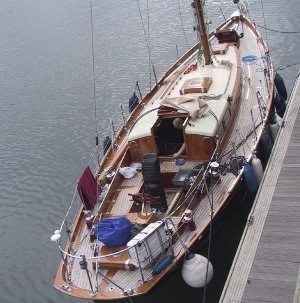
Griff Rhys Jones's celebrated Rhodes 45 sloop UNDINA alongside at Cherbourg, bound for Les Voiles de St Tropez. 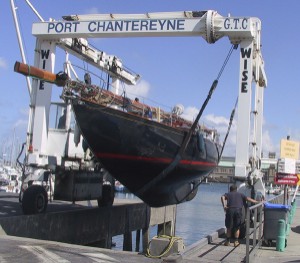
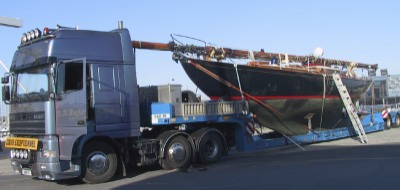 CLICK this picture of UNDINA for boat transport news from 2009. NAVIGARE NECESSE EST, VIVERE NON EST NECESSE To sail is necessary, to survive is not necessary. Attributed by Plutarch to Gnaeus Pompeius who sent sailors to sea in bad weather to bring grain from Africa to Rome. Ici on trouve la metéo, des vendeurs de bateaux, les spécialistes du transport bateau et la cyberbourse électronique des transporteurs. Ein Amerikaner aus Kalifornien war 1997 unser erster Kunde. Er liess seine Yacht in Amerika von Küste zu Küste transportieren. Seit diesem ungewöhnlichen Boottransport, hat unsere Transportbörse hunderte von Yachtbesitizern mit anderen Bootstransporteuren in Verbindung gebracht. Stellen auch sie ihr Transportproblem auf dem BTX board dar. Die Bootstranporteure geben kostenlos Ratschläge und bieten ihnen Preise an. | |||||||


